Through expert guides and real-world examples, twenty core podcast room ideas have been distilled to optimize sound quality, comfort, and style. Key strategies include selecting quieter spaces with soft furnishings to naturally reduce echo , applying strategic acoustic treatments like vertical panels and bass traps for balanced audio , and embracing minimalist layouts to keep focus on content and simplify troubleshooting. Furniture choices—from ergonomic chairs to multipurpose desks—ensure comfort and adaptability in both small and large setups. Branding, lighting, and decor elements further personalize podcast rooms, while smart home integrations and DIY hacks make professional-quality studios accessible to all.
Whether you’re transforming a spare corner or a full-fledged studio, the right podcast room can unlock clarity, creativity, and comfort. Thoughtful attention to layout, materials, and tech ensures each recording session feels professional yet personal. From selecting quieter spaces with soft furnishings to harnessing bespoke acoustic treatments, creating remarkable podcast rooms lies at the intersection of design and functionality. By blending proven sound-control strategies with aesthetic flair, your podcast room becomes more than a workspace—it’s a creative haven. Get ready to discover a spectrum of ideas to inspire your next audio-ready setup.
1. Choosing the Right Space for Your Podcast Room
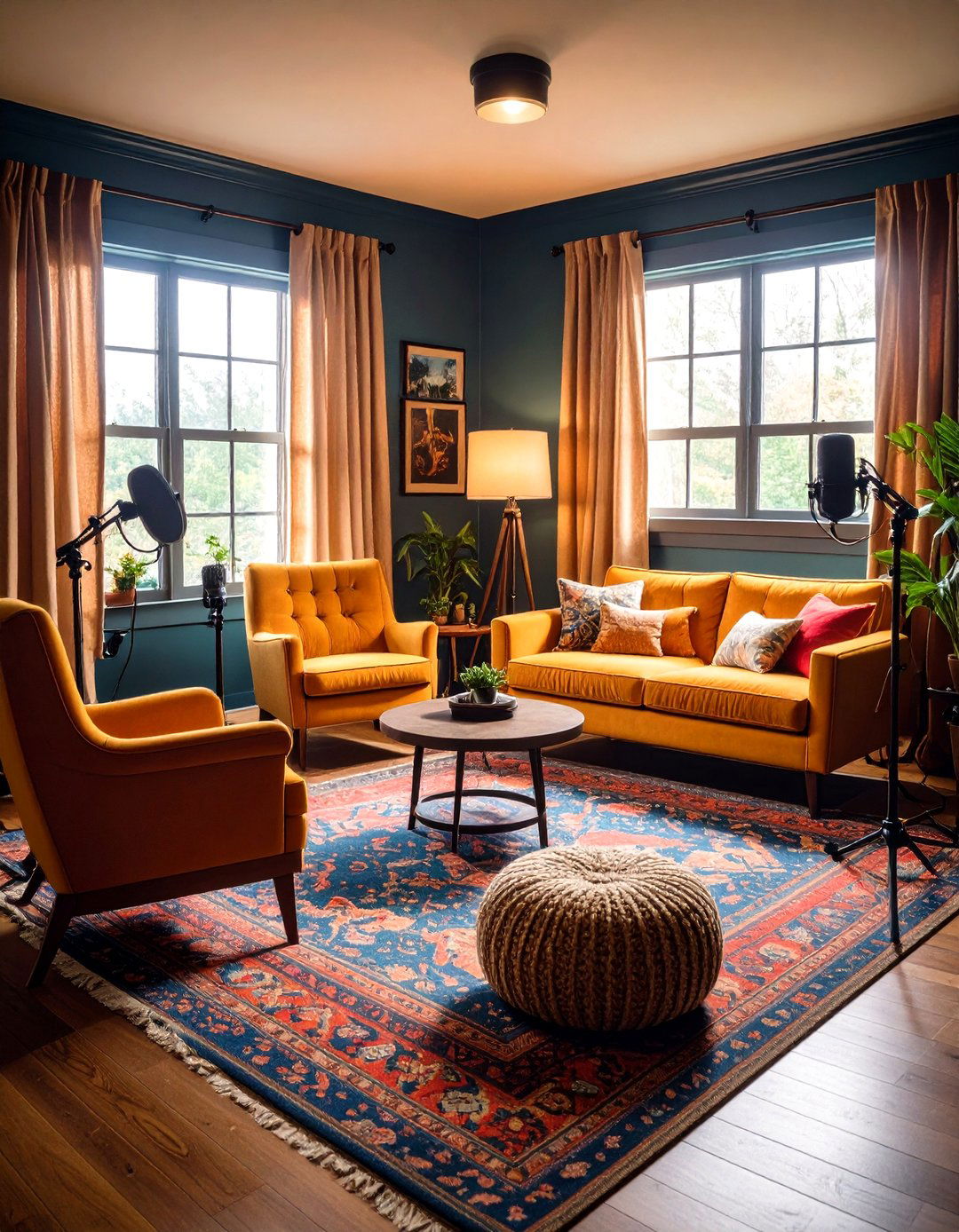
Selecting the ideal room sets the stage for any successful podcast room. Rooms with carpet, curtains, and soft furniture naturally absorb excess reflections, creating a quieter environment that reduces echo without expensive treatments. Basements and attic rooms often prove excellent starting points thanks to their isolation from household noise. Aim for a space that balances size—large enough for equipment but small enough to control sound. Before finalizing, record a quick test to check for persistent hums or rattles, and tweak the location as needed. By prioritizing room selection, you lay a solid foundation for clear, professional-sounding episodes.
2. Acoustic Panel Placement for Clear Sound
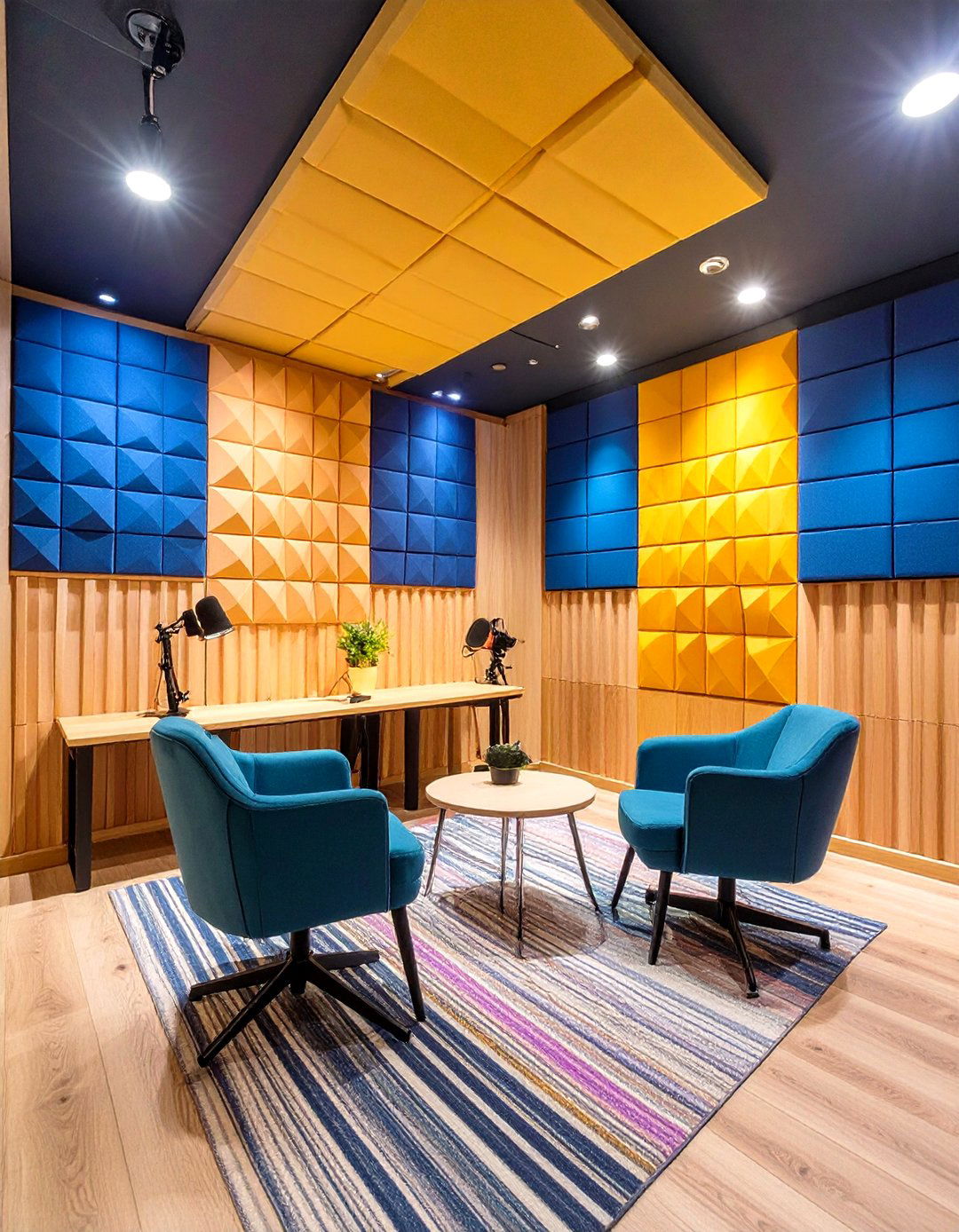
Managing reflections is key to pristine audio in your podcast room. Positioning acoustic panels at early reflection points—on side walls directly beside microphones and on the ceiling above—prevents sound waves from bouncing back into the mic. Complement these with bass traps in corners to tame low-frequency build-up, ensuring balanced recordings. Use fabric-wrapped panels or DIY alternatives like rock wool boards hidden within decorative frames. Experiment with panel placement by clapping hands and listening for lingering echoes, adjusting locations until the room sounds tight and controlled. Strategic acoustic treatment transforms any space into a broadcast-ready podcast room.
3. Minimalist Podcast Room Layout

Embracing minimalism in your podcast room helps reduce distractions and simplifies acoustic management. A clean desk surface with just essential gear—microphone, mixer, and headphones—keeps focus on content creation. Mount monitors on adjustable arms to free desk space and maintain ergonomic alignment. Opt for wall-mounted storage rather than bulky shelving, and tuck cables into channels or under-desk trays for a streamlined look. Neutral color palettes with a single bold accent draw visual interest without overwhelming the zone. By paring down to what truly matters, a minimalist podcast room layout supports creative flow and makes technical troubleshooting smoother.
4. Dark Color Schemes for Intimate Podcast Studios
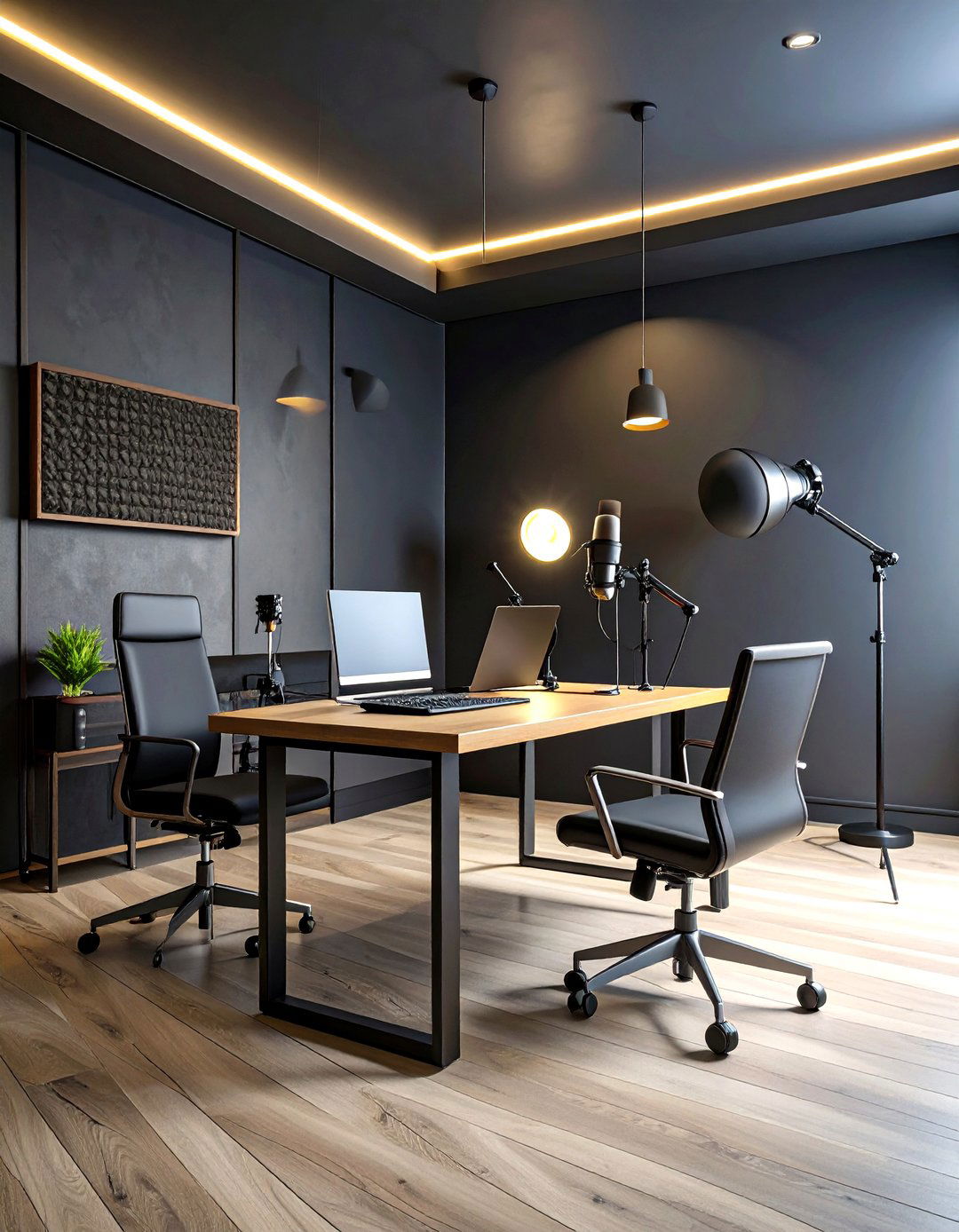
Adopting a dark color palette in your podcast room creates an intimate atmosphere that draws listeners in. Deep hues—such as charcoal, navy, or forest green—absorb light and reduce glare, helping cameras balance exposure if you video-record. Dark walls also mask acoustic treatments seamlessly, allowing for sleek integration of paneling. A cozy environment can boost host comfort and focus during extended sessions. Balance darker shades with strategic lighting—like a warm desk lamp or LED strips—to highlight key areas and prevent the room from feeling too enclosed. Dark color schemes turn your podcast studio into a moody, professional backdrop for both audio and visual content.
5. Neon Accents to Energize Your Podcast Room
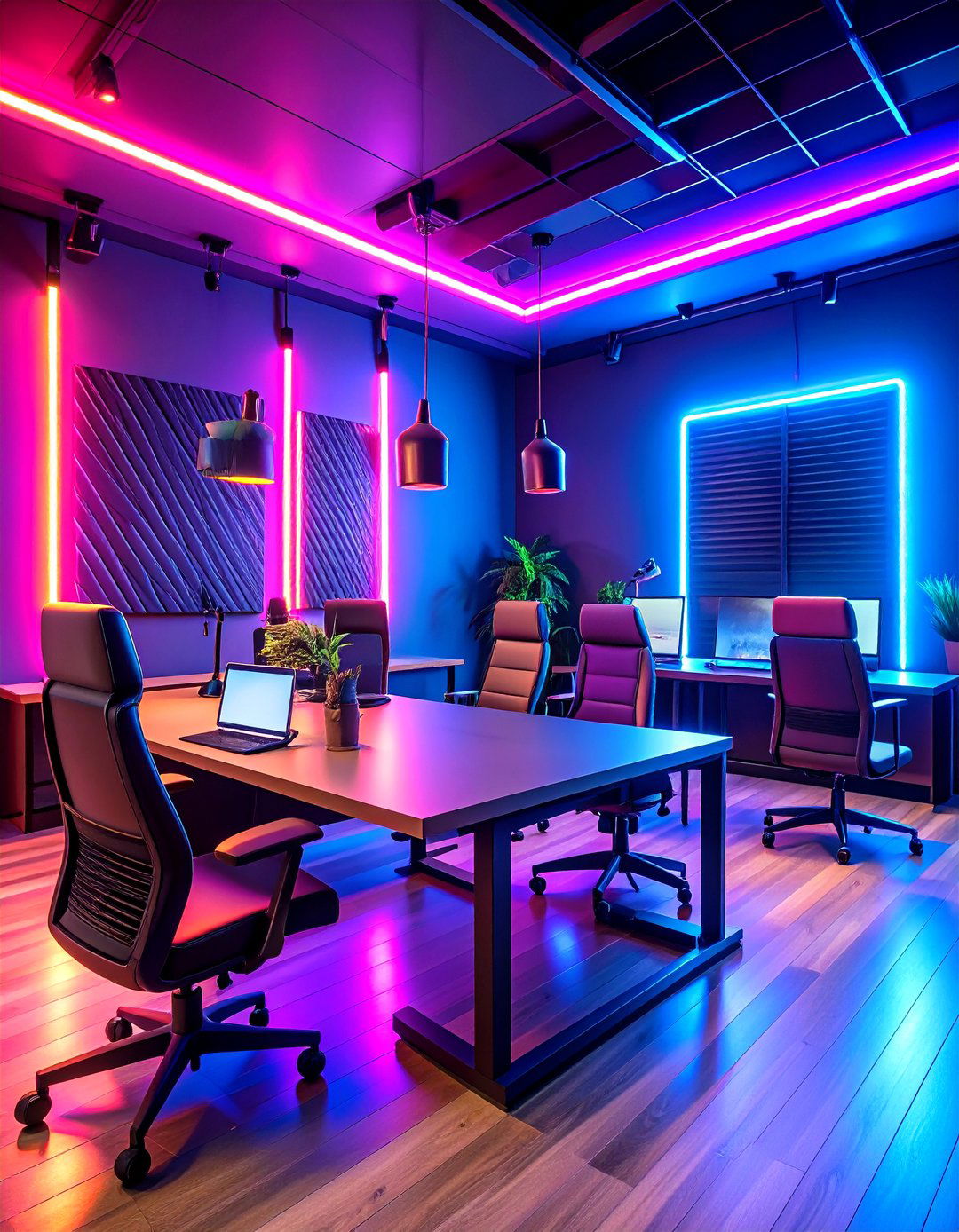
Introducing neon accents elevates the visual energy of your podcast room, making recordings pop. Custom neon signs behind the hosts can reinforce branding with your show’s logo or tagline, offering a luminous focal point. Position LED neon tubes along ceiling coves or under floating shelves to cast colorful glows without harsh shadows. Choose adaptable fixtures—like color-changing strips—to experiment with moods across episodes. Neon also makes for compelling thumbnail backdrops in video versions, driving curiosity on social feeds. By weaving playful neon elements into your podcast room, you infuse personality and a modern edge that resonates with listeners and viewers alike.
6. Cozy Furnishings for Comfortable Podcast Rooms
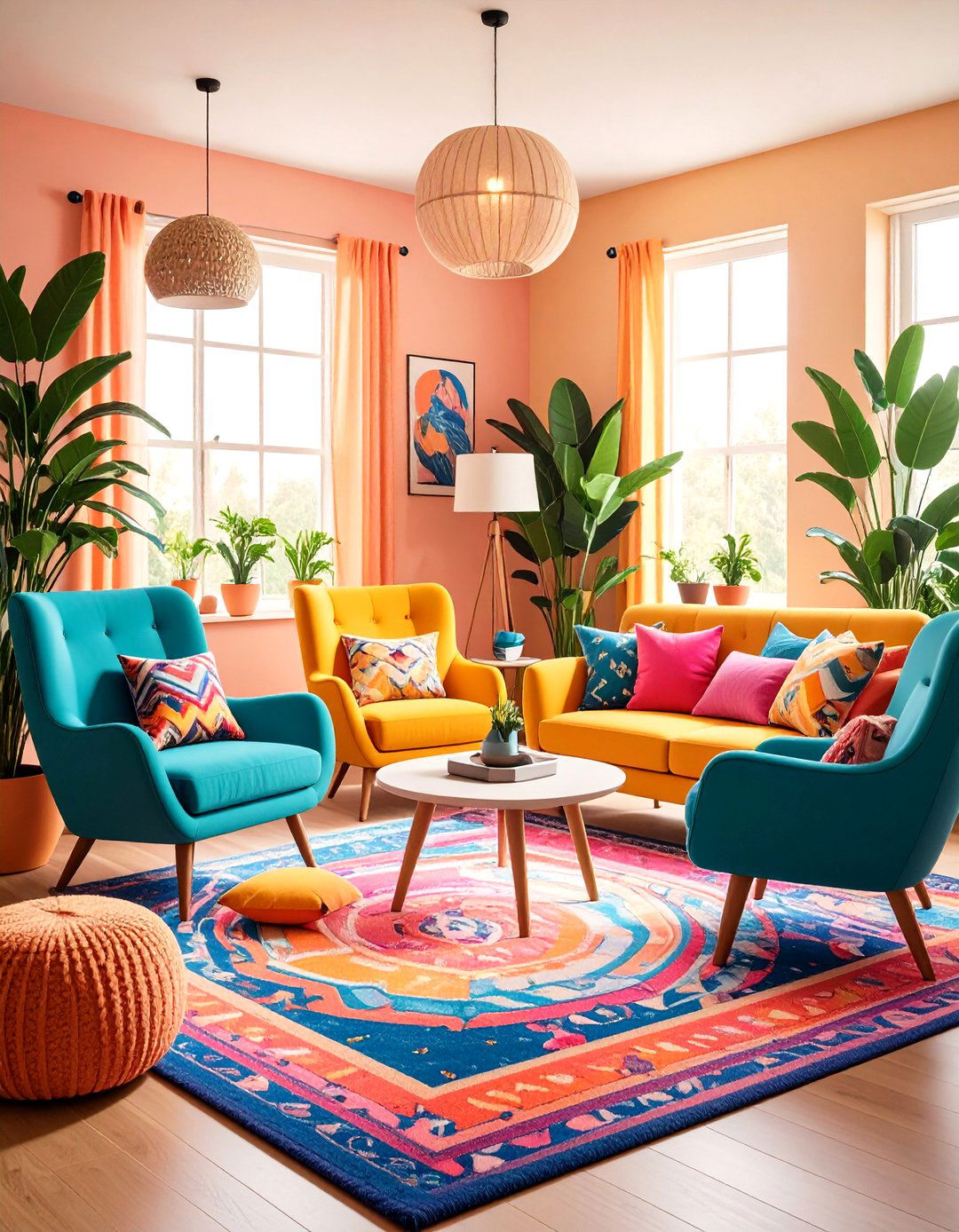
Comfortable seating and surroundings can help hosts and guests relax in any podcast room. Choose ergonomic chairs with lumbar support to maintain posture during longer recordings. Add a small sofa or lounge chair to create a welcoming vibe, especially useful when you invite guests for conversational formats. Layer soft rugs or low-profile carpets beneath furniture to further dampen echo. Incorporate textured throw pillows and blankets in complementary tones to soften harsh lines and liven the set. A plush area rug under the main recording area not only enhances acoustics but also anchors the space visually. By blending coziness with function, your podcast room becomes a retreat for genuine, engaging conversations.
7. Vertical Storage Solutions in Podcast Rooms
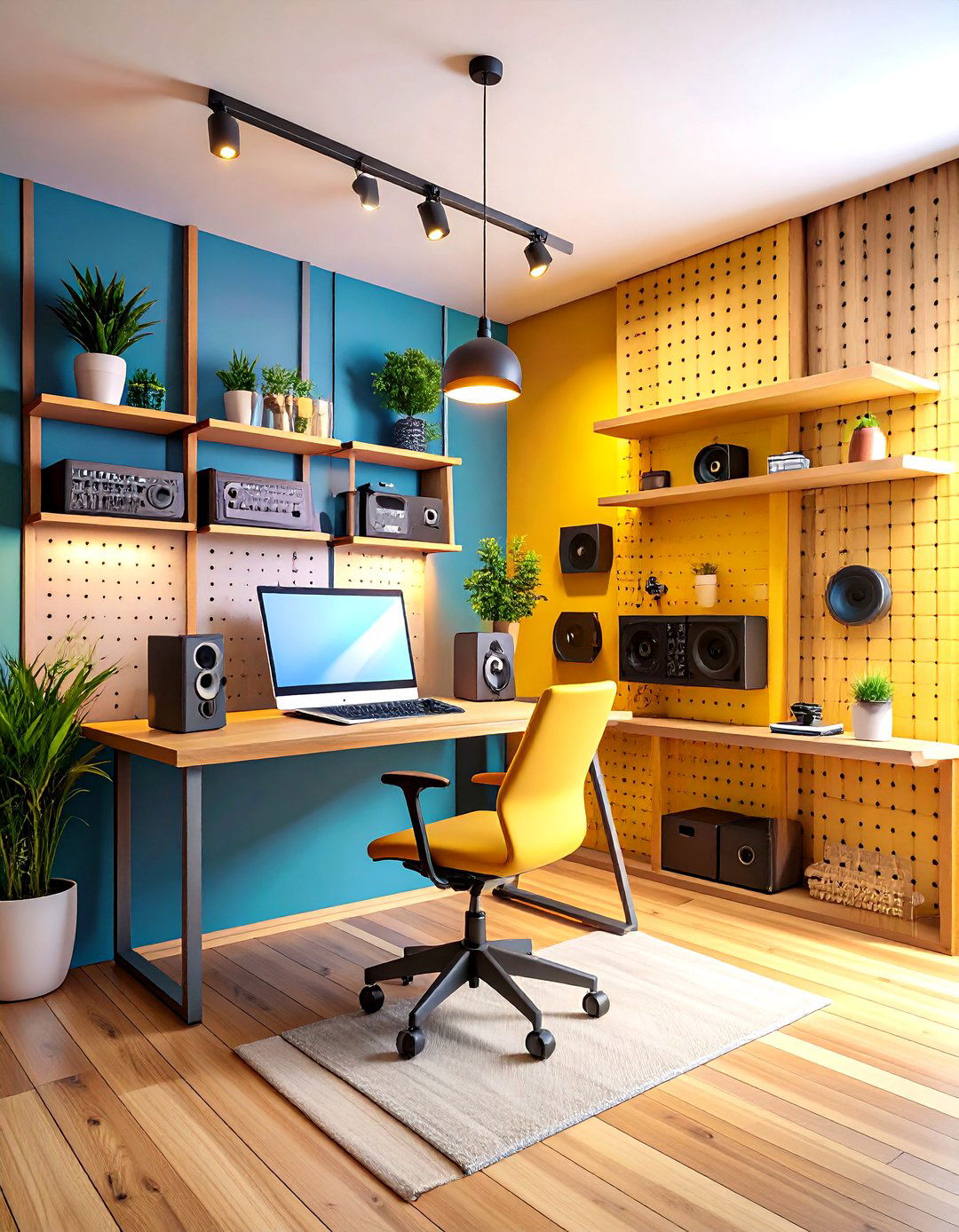
Optimizing wall space with vertical storage keeps gear accessible while preserving floor room in your podcast room. Install floating shelves to house microphones, headphones, and accessories within arm’s reach. Use pegboards with hooks for cable management and quick rearrangement of equipment. Magnetic strips can display tools like mic clips or small gadgets. Shelves above workstations double as decorative zones—showcase branded merch or art pieces without cluttering desk surfaces. Make sure shelving units are securely anchored and acoustic-friendly by lining them with fabric or foam to prevent unwanted reflections. Vertical storage not only enhances organization but also adds visual interest to your podcast room’s backdrop.
8. Multipurpose Furniture for Small Podcast Studios
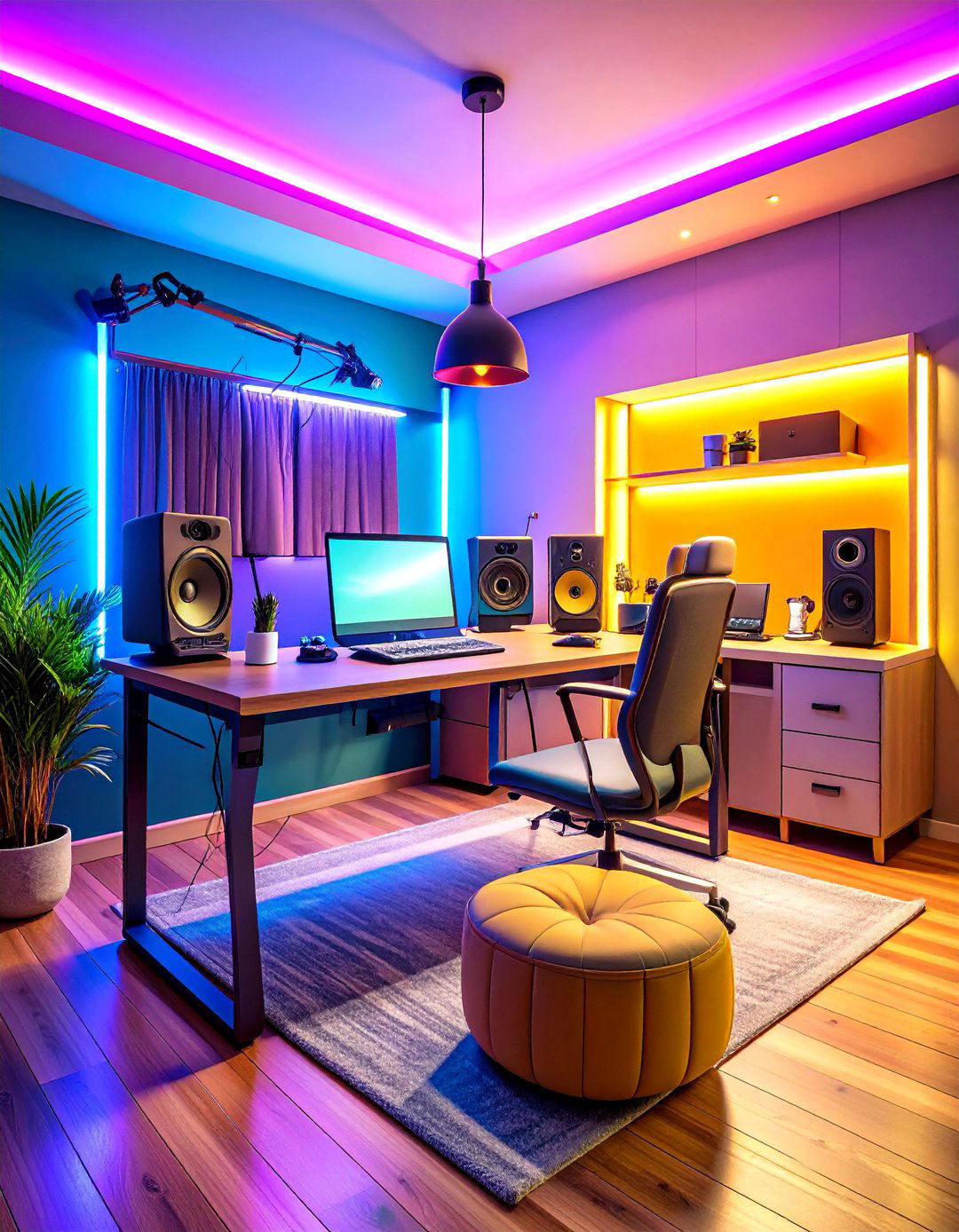
In compact podcast rooms, choose furniture that serves multiple functions to maximize usability. Consider desks with integrated racks or built-in shelves to hold audio interfaces and storage bins. Folding tables can extend workspace when needed and tuck away afterward to free up floor area. Ottomans with concealed compartments double as seating or footrests while hiding cables or adapters. Adjustable-height desks let you switch between sitting and standing during production sessions, boosting comfort and creativity. Rolling carts offer mobile storage, so you can reposition equipment based on session format. By investing in versatile furniture, a small podcast studio can feel spacious and adapt seamlessly to different recording needs.
9. Lighting Techniques to Enhance Your Podcast Room
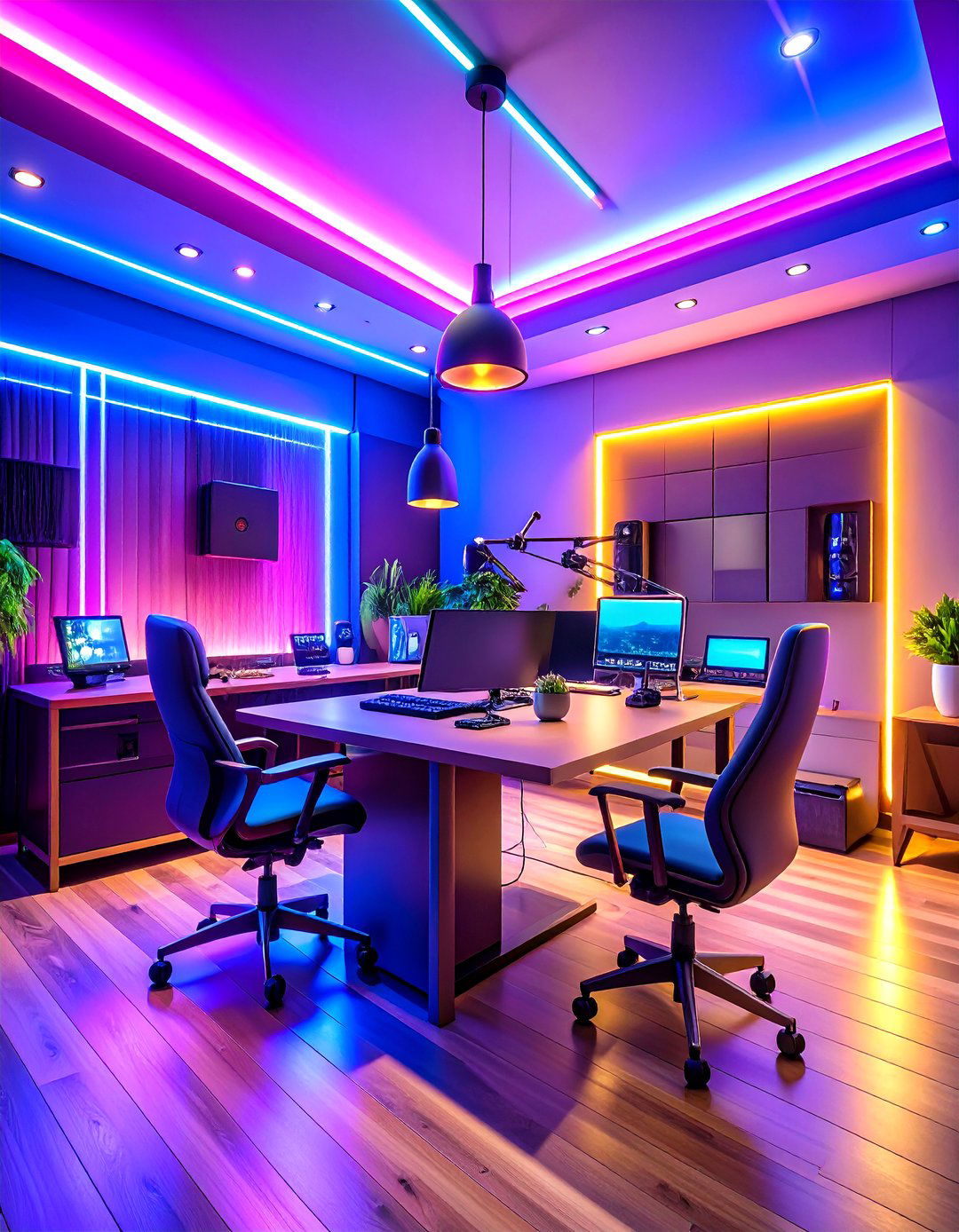
Effective lighting transforms ambiance and visibility in any podcast room. Layer three types: ambient overhead lights for general illumination, task lighting on the desk for papers and gear visibility, and accent lights—such as LED strips or spotlights—to spotlight hosts. Use diffusers or softboxes to soften harsh shadows and avoid glare off mixing boards or monitors. Consider tunable white LEDs that adjust color temperature for early-morning versus late-night recordings. For video podcasts, add a key light at a 45-degree angle to hosts and a fill light on the opposite side to eliminate unflattering shadows. Balanced lighting not only looks professional but also helps maintain focus during marathon editing sessions.
10. Cable Management for a Tidy Podcast Studio
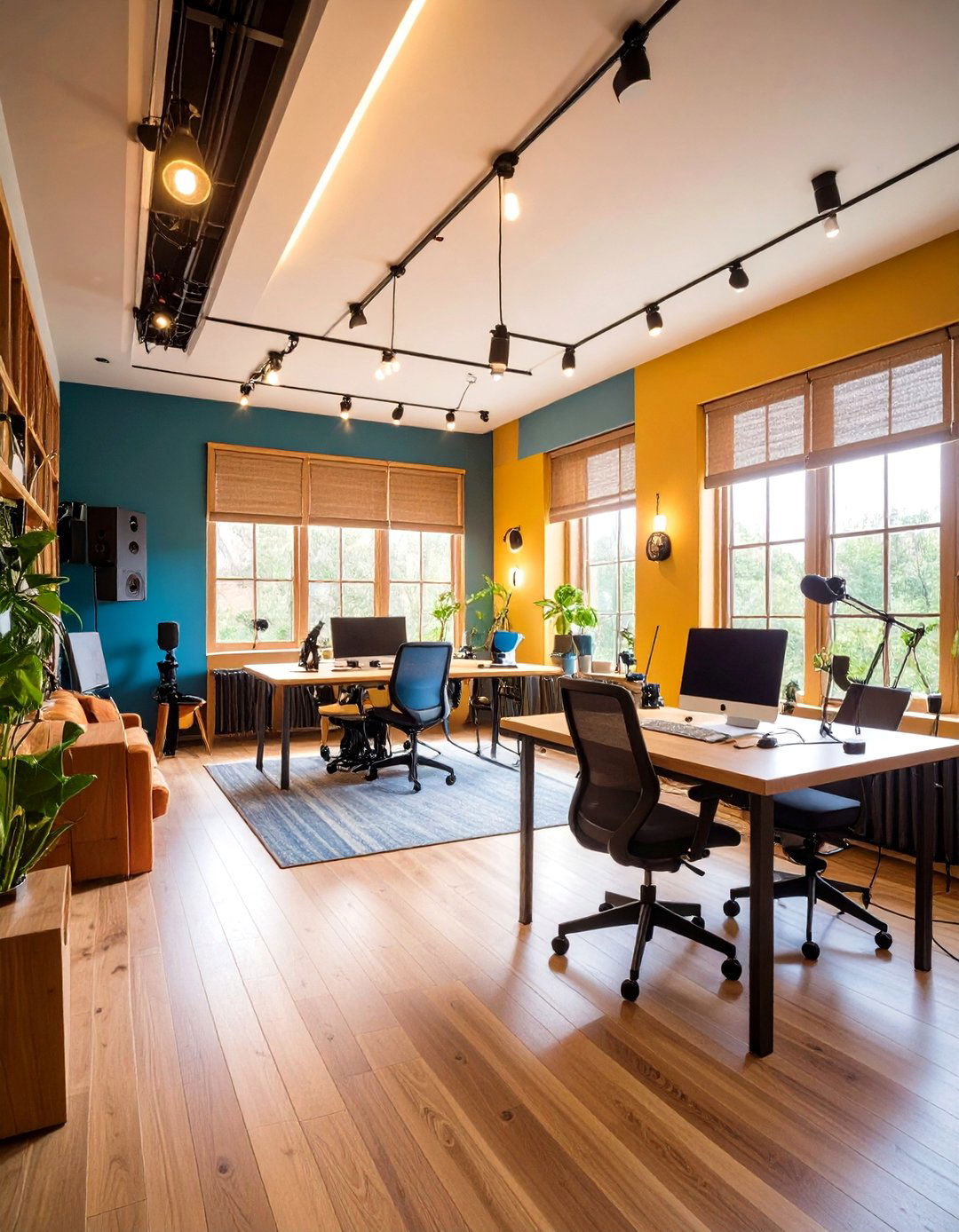
Unorganized cables can undermine both safety and aesthetics in your podcast room. Employ cable raceways or adhesive-backed channels along walls and under desks to route power and audio lines neatly out of sight. Velcro cable ties allow quick adjustments and prevent tangles while enabling component swaps during gear upgrades. Label each cable at both ends for easy identification when troubleshooting or relocating devices. If possible, route power cords separately from audio cables to minimize electrical interference. For wireless microphones and headphones, designate a charging station within your workspace to keep batteries topped up and gadgets ready. Clean cable runs not only look professional but also improve workflow.
11. Branding Elements in Your Podcast Room
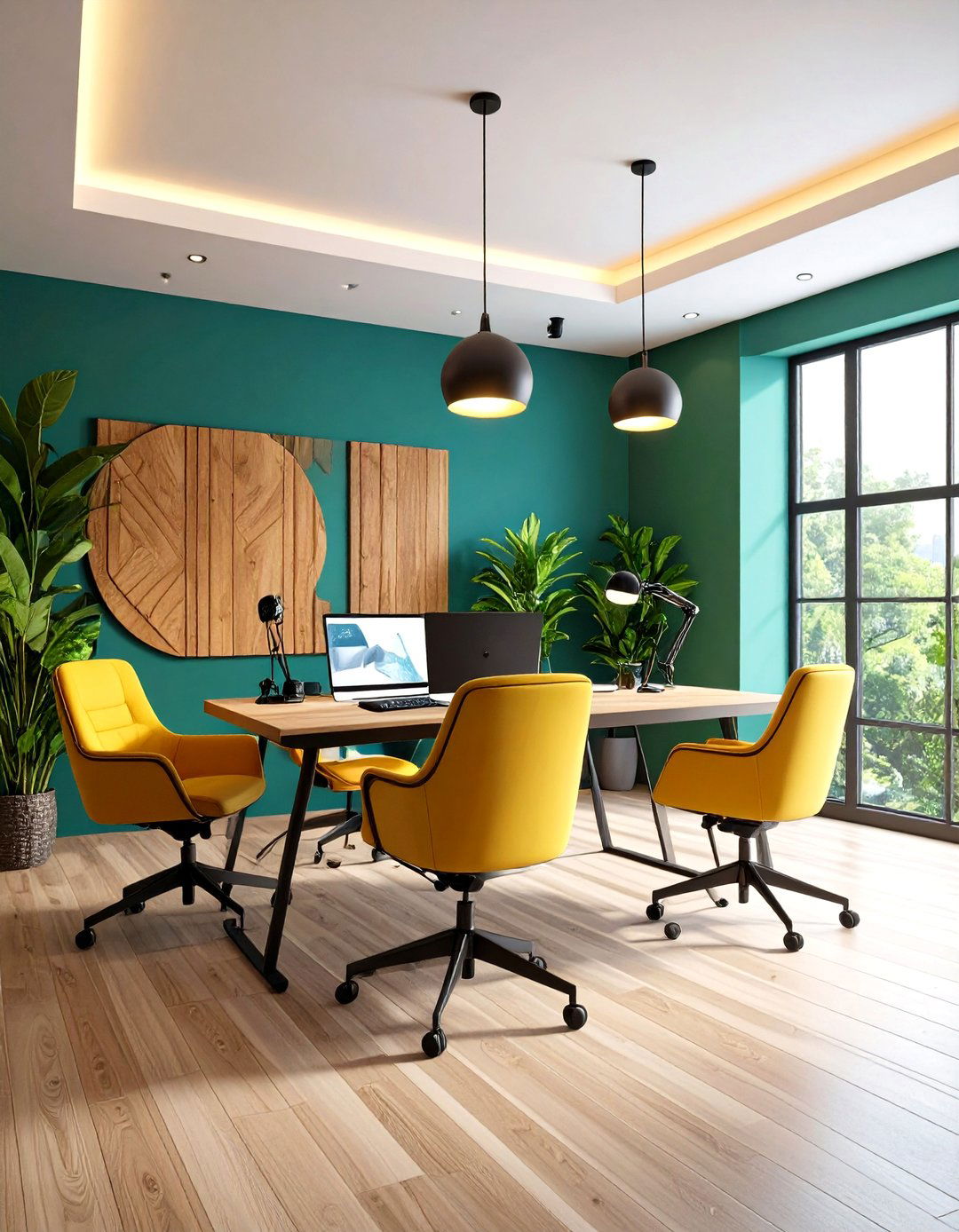
Incorporating branding into your podcast room fosters a professional identity that resonates with listeners. Include branded backdrops—such as custom-printed fabric banners or framed logos—behind the host setup to reinforce show recognition. Use color schemes and accent pieces that align with your podcast’s artwork and website palette. Display product samples or thematic props relevant to episode topics to spark conversation and set visual context. When video-recording, position a logo subtly on camera without overpowering the scene. Branding elements act as visual cues, making your podcast room instantly recognizable across social media thumbnails and promotional clips.
12. Guest-Friendly Seating Arrangements
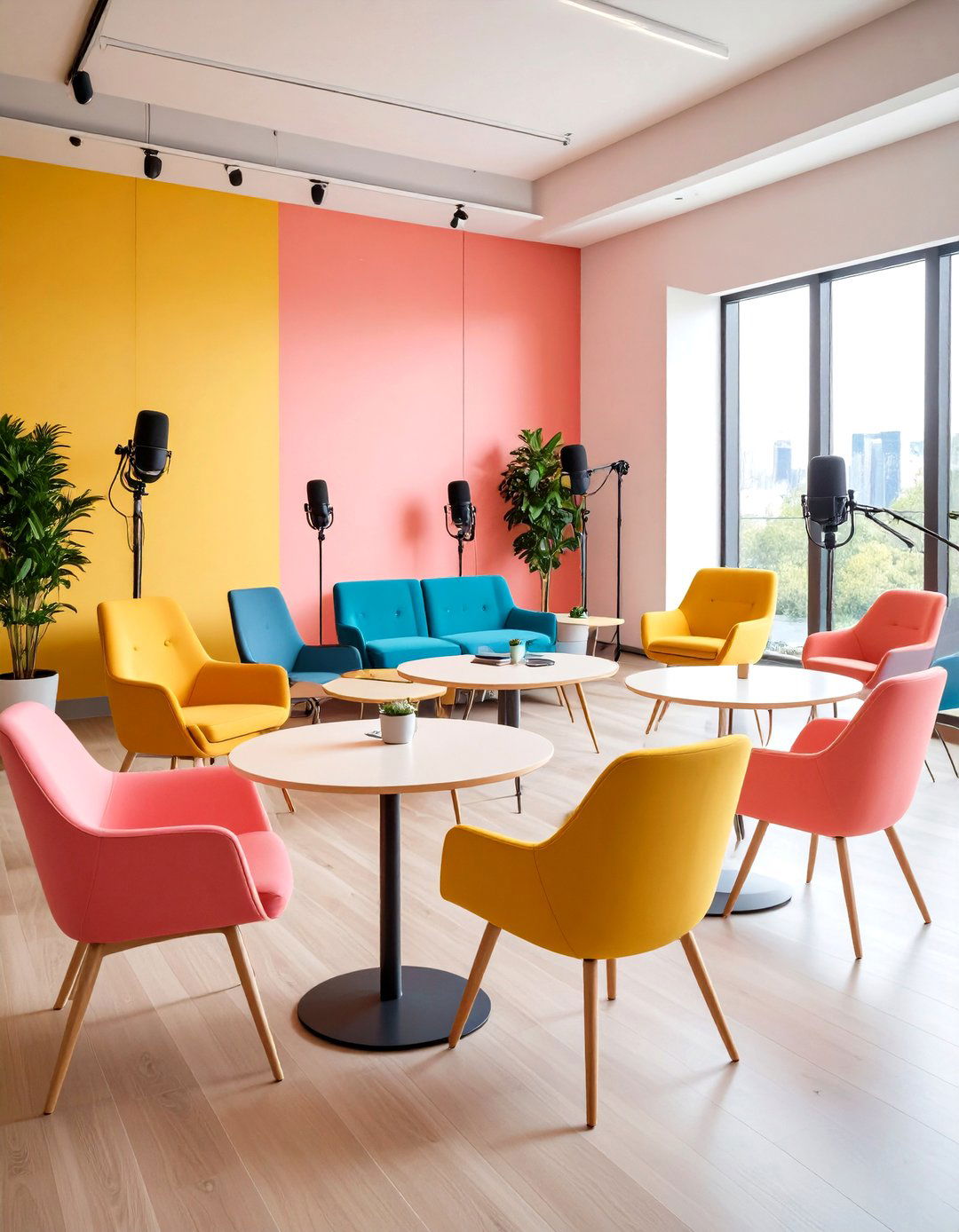
Designing your podcast room for guests ensures smooth, natural conversations. Arrange chairs or stools at a slight angle facing each other to facilitate eye contact, rather than having everyone face the microphone directly. Maintain at least two feet of space between seating to allow comfortable microphone positioning and movement, but avoid making it feel too distant. Provide side tables for guests to place water, notes, or personal items. Adding a small area rug under the seating zone can visually define the guest space while aiding acoustics. A well-thought-out seating layout helps guests feel at ease and fosters dynamic, engaging dialogues.
13. Integrating Video Gear into Podcast Rooms
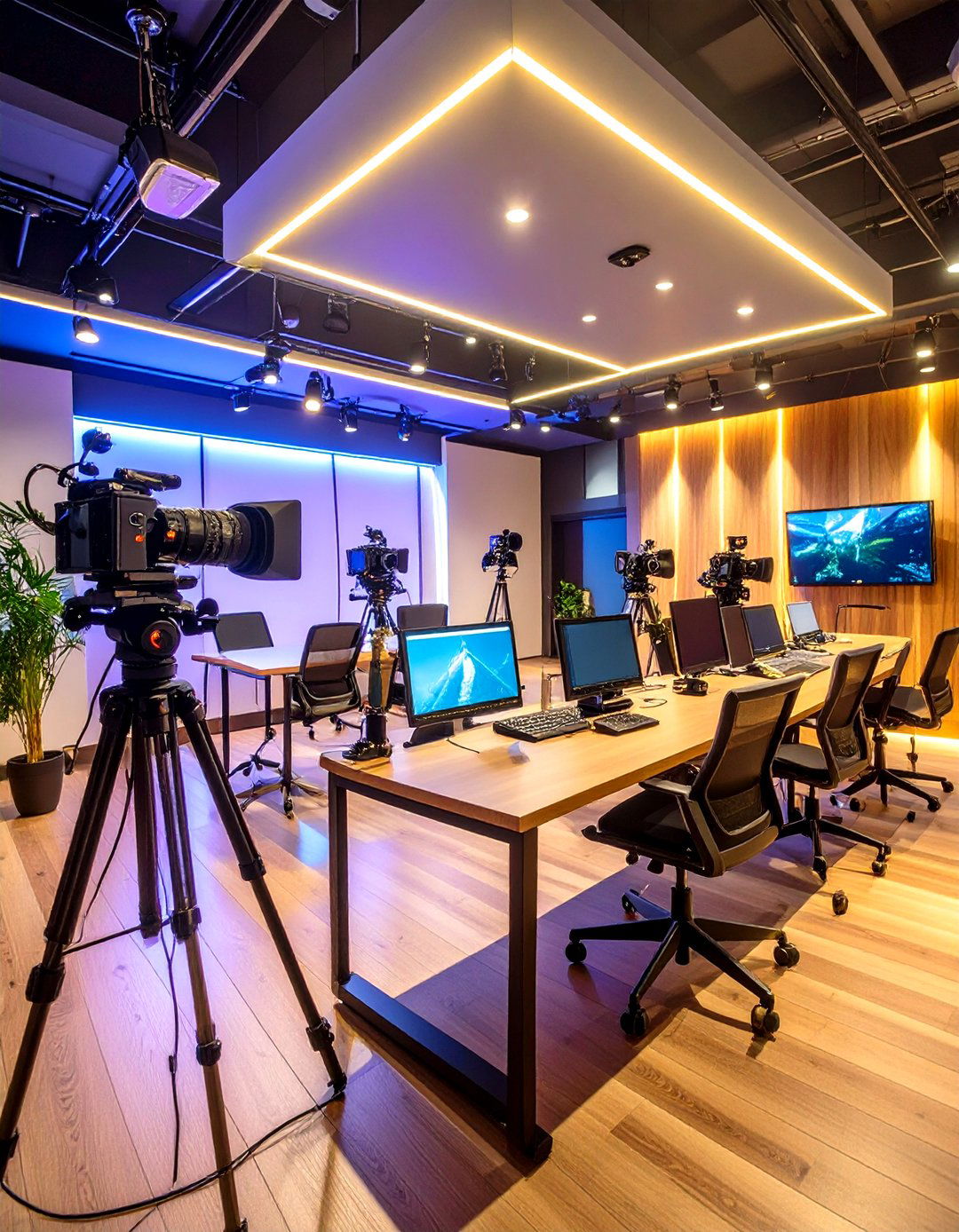
As video podcasts continue to gain popularity, integrating cameras and lighting becomes essential in your podcast room. Mount key cameras on adjustable tripods or wall brackets to capture multiple angles without cluttering desk space. Route HDMI cables through raceways or use wireless video transmitters for cleaner setups. Incorporate small teleprompter rigs if you reference notes on camera. Sync LED panel lights with on-camera rigs to ensure balanced exposure. Plan cable paths and power sources ahead of time to prevent tripping hazards and signal dropout. By seamlessly blending video and audio equipment, your podcast room can handle versatile production types, from solo chats to multi-person interviews.
14. DIY Soundproofing Hacks for Podcast Studios
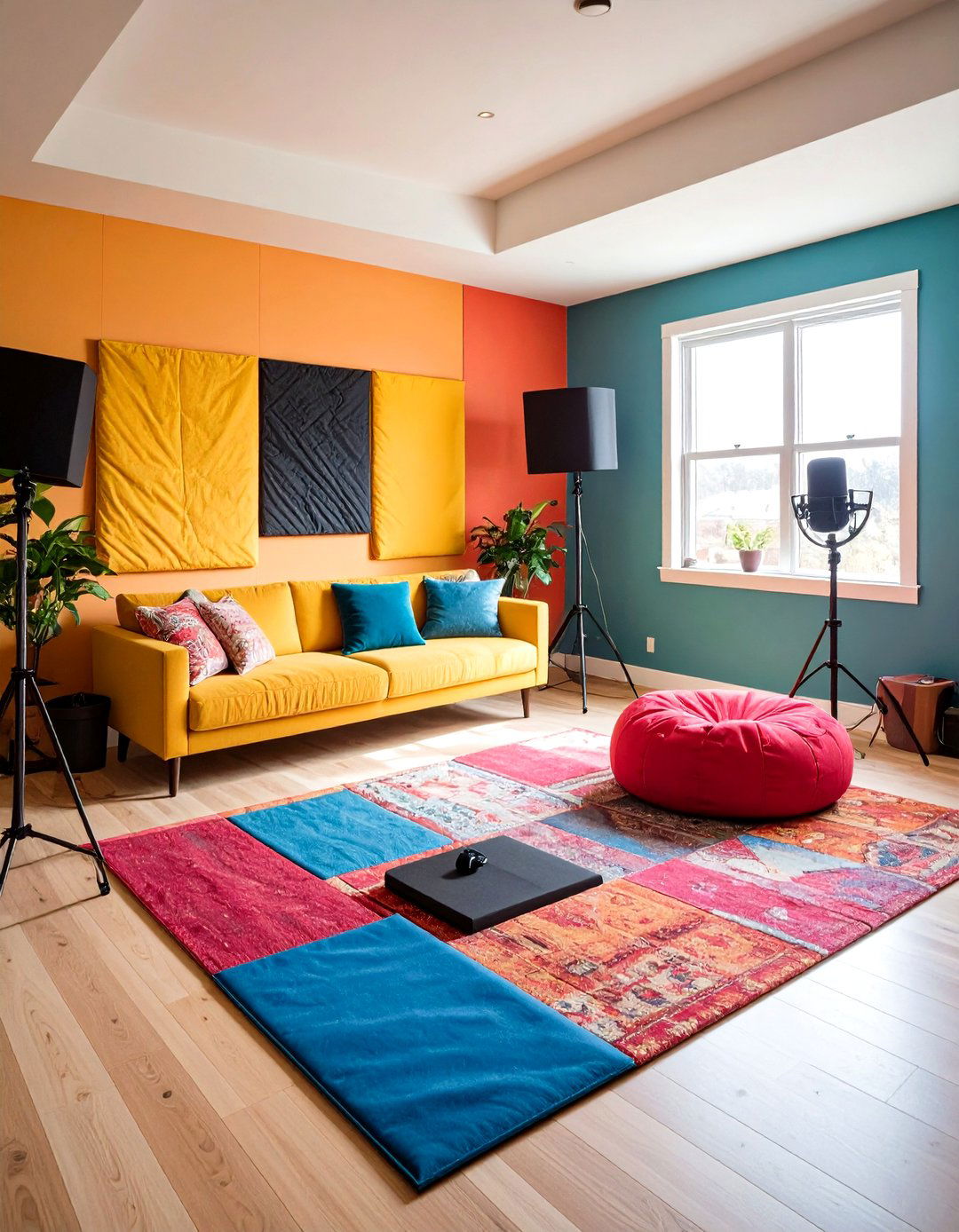
Effective soundproofing doesn’t always require professional installation; simple DIY hacks can suffice for many podcast rooms. Hang thick moving blankets or quilts on walls and doors to muffle outside noise inexpensively. Seal gaps around windows and doors with weatherstripping or draft seals to block sound leaks. Place mass-loaded vinyl beneath rugs or carpets for extra sound isolation underfoot. Use bookshelf-filled walls to create diffusion and absorption surfaces. Consider fabric-wrapped canvases filled with acoustic insulation as decorative art pieces. While these tricks won’t match studio-grade construction, they dramatically cut unwanted noise with minimal cost and effort.
15. Biophilic Design to Refresh Your Podcast Room
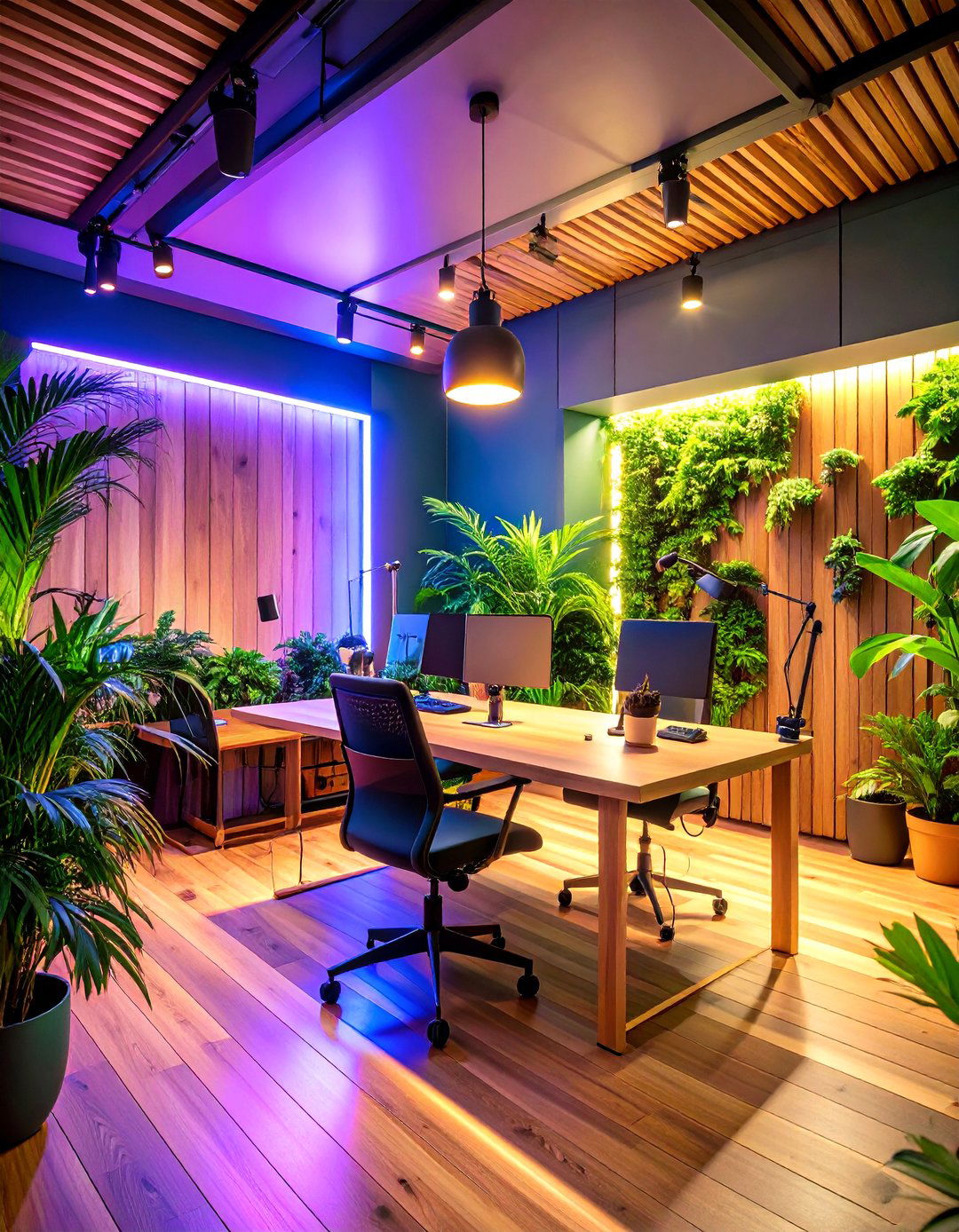
Incorporating natural elements in your podcast room can boost creativity and well-being. Position potted plants near workstations to introduce greenery, improve air quality, and soften harsh technical gear. Use reclaimed wood accents—such as live-edge desks or floating shelves—to evoke a warm, organic feel. Natural light through blinds or sheer curtains can enhance mood and reduce eye strain during long editing sessions. Textures like jute rugs or woven baskets add tactile interest while absorbing some sound. Biophilic touches connect your podcast room to the outdoors, inspiring more authentic conversations and sustaining host energy throughout recording.
16. Smart Home Tech in Podcast Studios
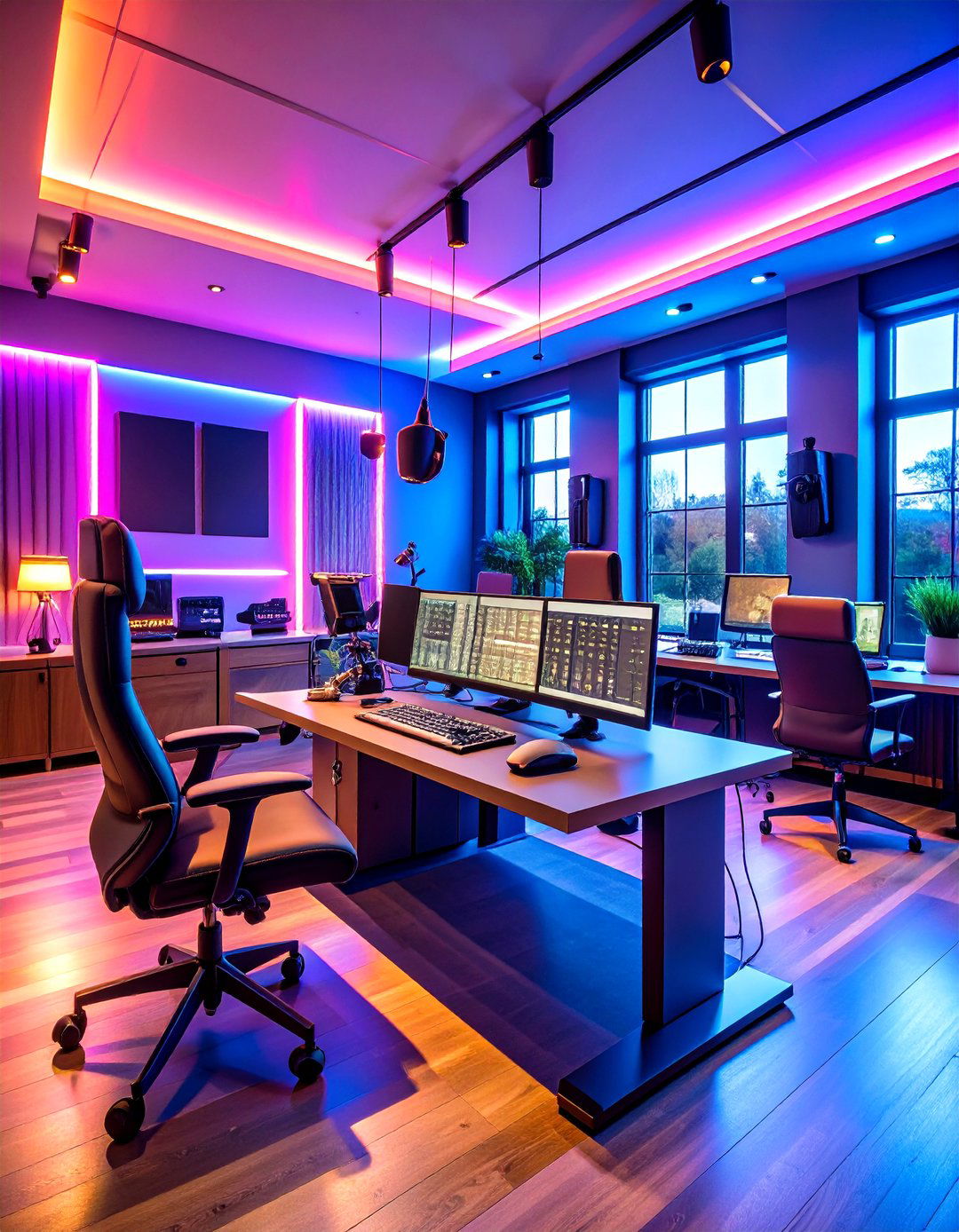
Leveraging smart home technology can streamline control over your podcast room environment. Install programmable smart plugs to power on mixers, lights, and heaters with a single voice command or scheduled routine. Use app-controlled thermostats to maintain ideal temperature for host comfort. Integrate smart lighting systems—like programmable LEDs—to instantly shift color temperature and brightness between recording modes. Voice assistants can cue opening music or adjust volume without interrupting takes. For multi-room productions, networked audio interfaces enable remote monitoring and recording. By automating routine tasks, smart home tech keeps your focus on content creation, not manual adjustments.
17. Budget-Friendly Decor for Podcast Rooms

Creating an inviting podcast room on a budget is entirely achievable with DIY decor. Shop secondhand stores or online marketplaces for affordable furniture, then refresh it with a coat of paint that complements your theme. Frame inexpensive prints or use peel-and-stick wallpaper to add personality without high costs. Upcycle shipping pallets into mic stands or shelves for a rustic touch. Thrifted rugs and curtains can both improve acoustics and add color cohesion. Maximize natural light with sheer window treatments instead of expensive lamps. With resourceful shopping and hands-on upgrades, you can design a stylish podcast room without breaking the bank.
18. Personalized Acoustic Treatments for Podcast Studios
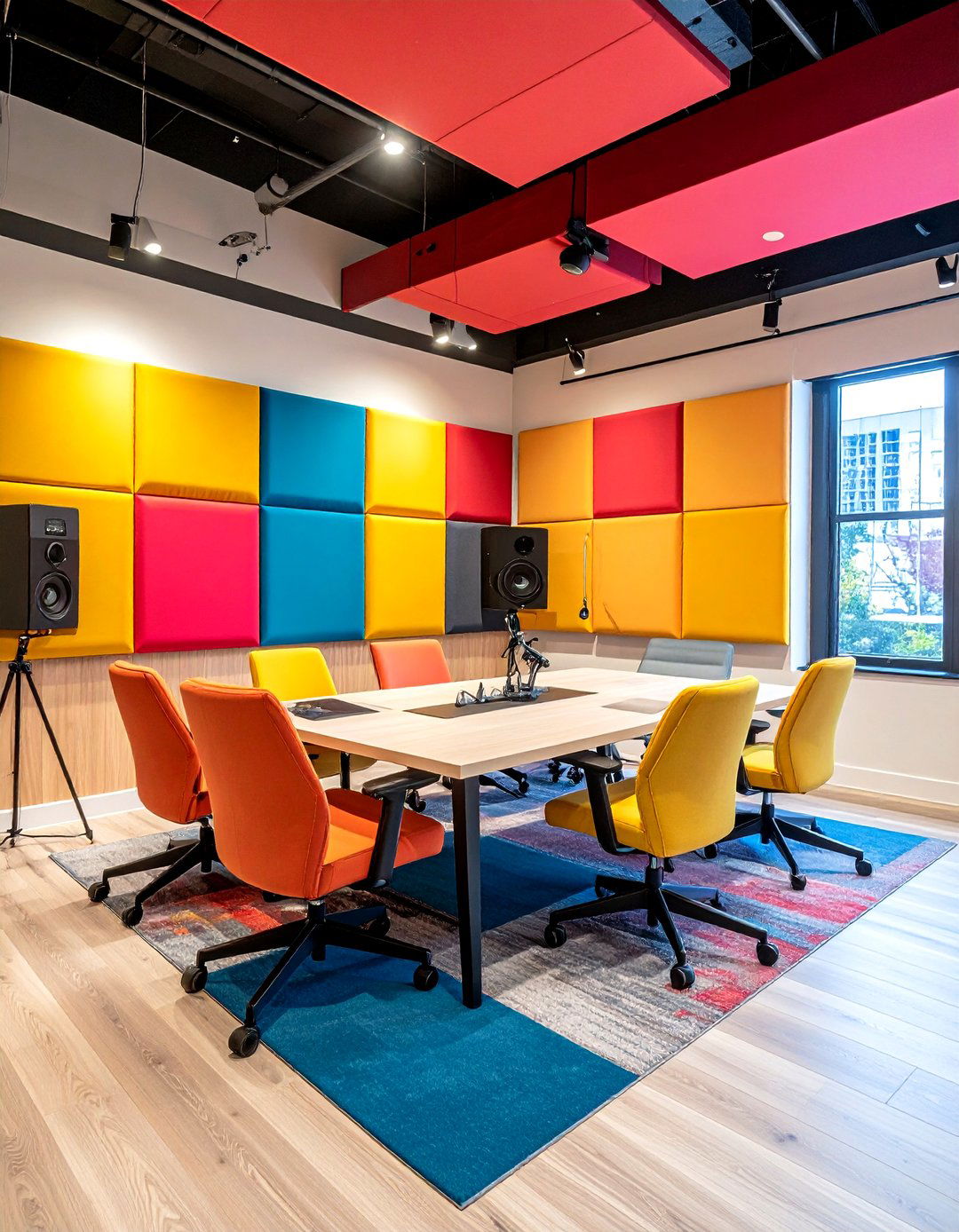
Customizing acoustic treatments in your podcast room ensures sound control tailored to your voice and room characteristics. Consider building movable absorption panels that you can reposition based on changing furniture layouts or guest count. Tune bass traps by adjusting their density or placement to target low-frequency build-up identified in initial recordings. For aesthetic flair, print custom graphics on acoustic panel fabric covers featuring show branding or theme art. Combine reflective surfaces in specific areas to maintain liveliness, while focusing absorption where clarity is paramount. Personalized treatment plans refine your podcast room’s acoustics, delivering consistently clear, professional-sounding audio.
19. Ergonomic Equipment Placement in Podcast Rooms
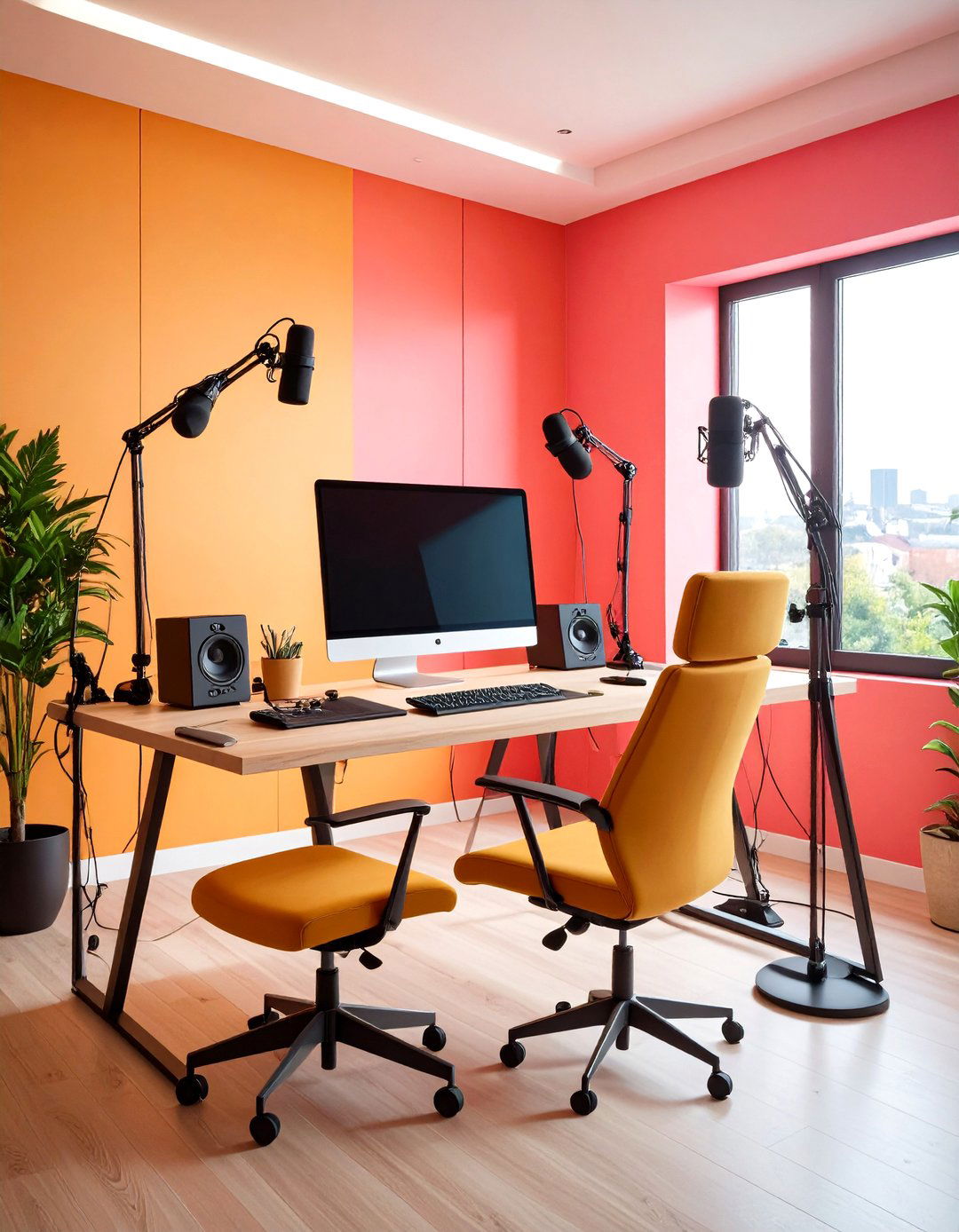
Strategic placement of equipment in your podcast room reduces strain and makes workflow smooth. Position microphones at mouth level using adjustable boom arms, and ensure mixers or control surfaces sit within easy reach without stretching. Place monitors at eye height roughly an arm’s length away to maintain proper posture during editing. Route headphones on a dedicated hook or stand at desk edge for effortless access. Keep commonly used items—like notepads, pens, and water—within two feet to minimize interruptions. An ergonomically optimized setup not only protects your health but also allows for fluid, uninterrupted recording sessions.
20. Inspirational Art and Decor in Podcast Studios
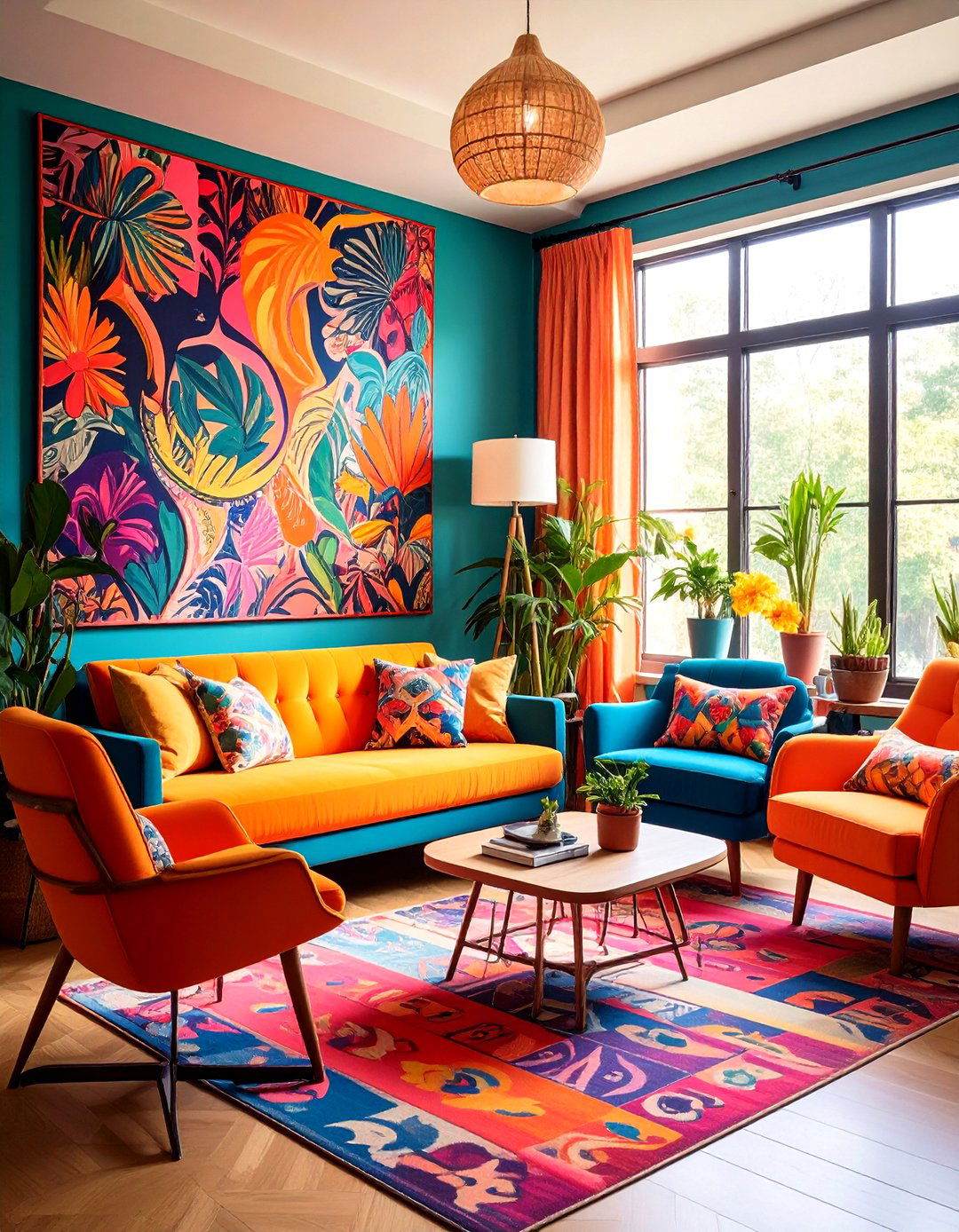
Adding art and decor to your podcast room can spark creativity and set the tone for episodes. Choose wall art that aligns with your podcast’s theme—such as motivational quotes, abstract designs, or guest portraits—to inspire conversation. Incorporate textiles like colorful tapestries or custom rugs to introduce pattern and warmth. Display intriguing objects—like retro gadgets or travel mementos—to serve as conversation starters during recordings. Use interchangeable decor pieces on a gallery-style wall to keep the backdrop fresh for returning viewers. Thoughtful decor elevates the look of your podcast room and enriches the creative ambience.
Conclusion:
Designing a podcast room involves more than just placing a microphone in a quiet corner—it blends acoustics, comfort, aesthetics, and technology into a cohesive whole. Whether you’re mapping out vertical storage, dialing in soundproofing hacks, or adding biophilic touches, each idea serves to enhance clarity and inspire authenticity. By implementing any combination of these twenty concepts—from minimalist layouts to smart home automation—you can craft podcast rooms that capture professional polish and personal flair. Embrace experimentation, adapt these strategies to your space, and watch your recordings thrive.


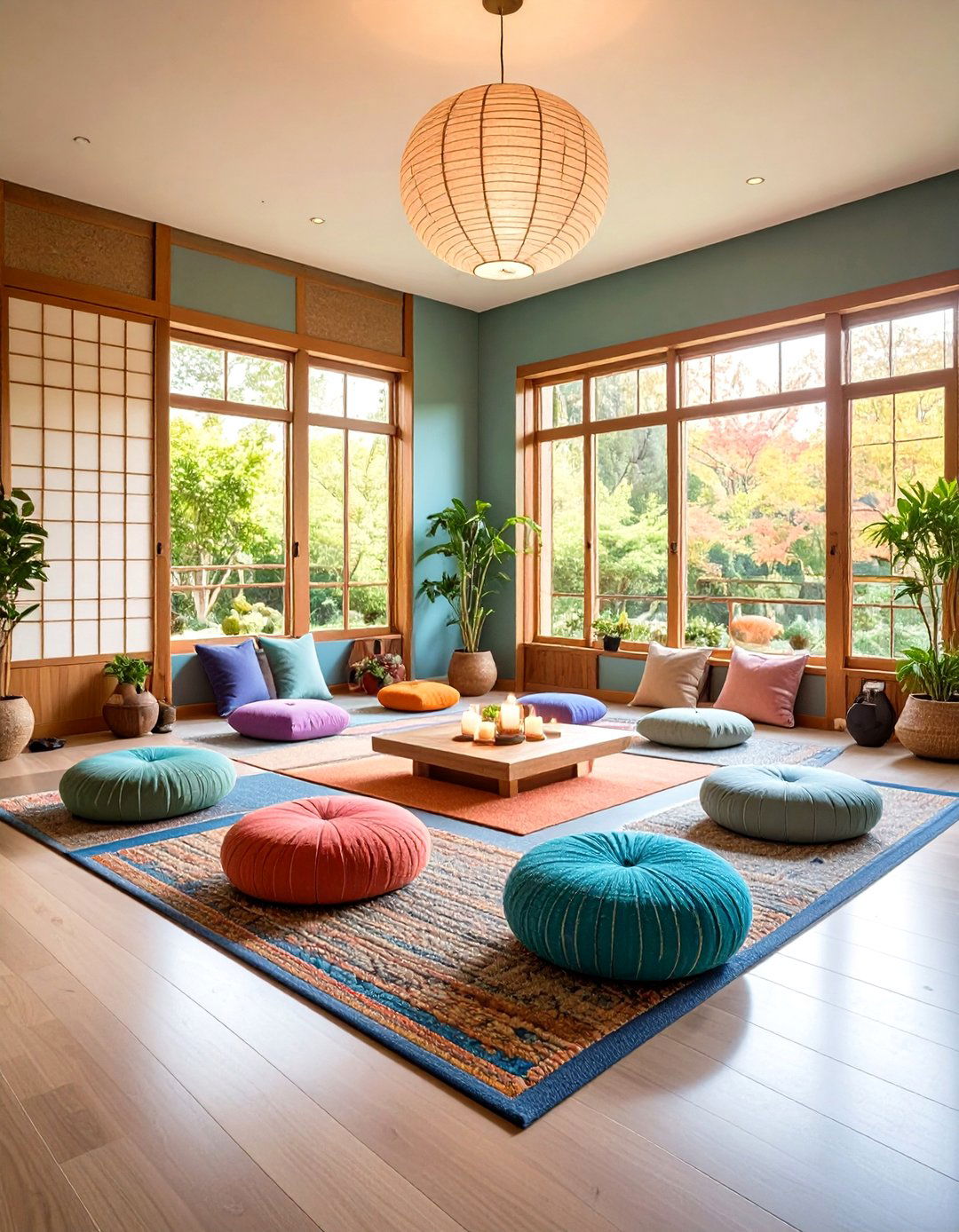



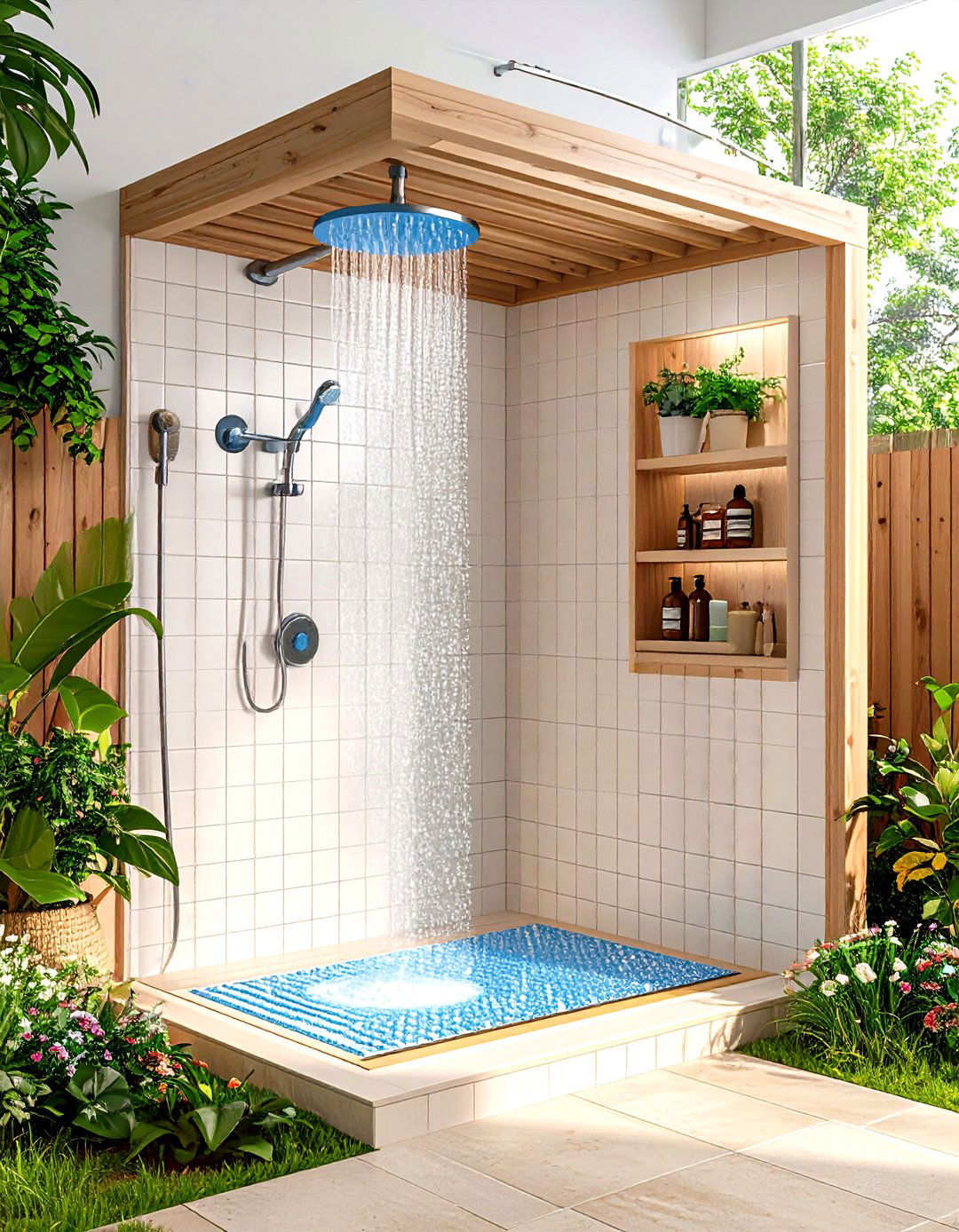
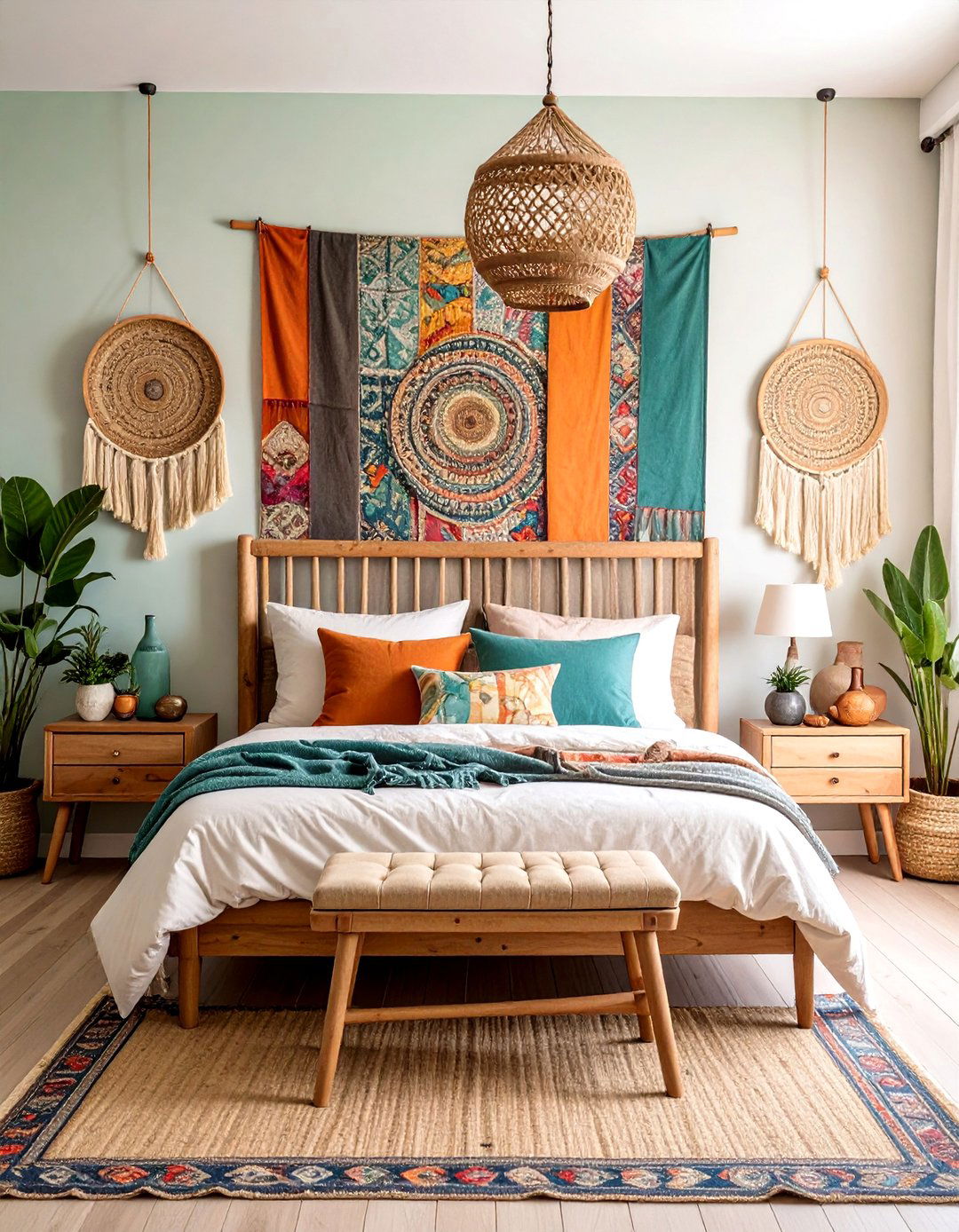
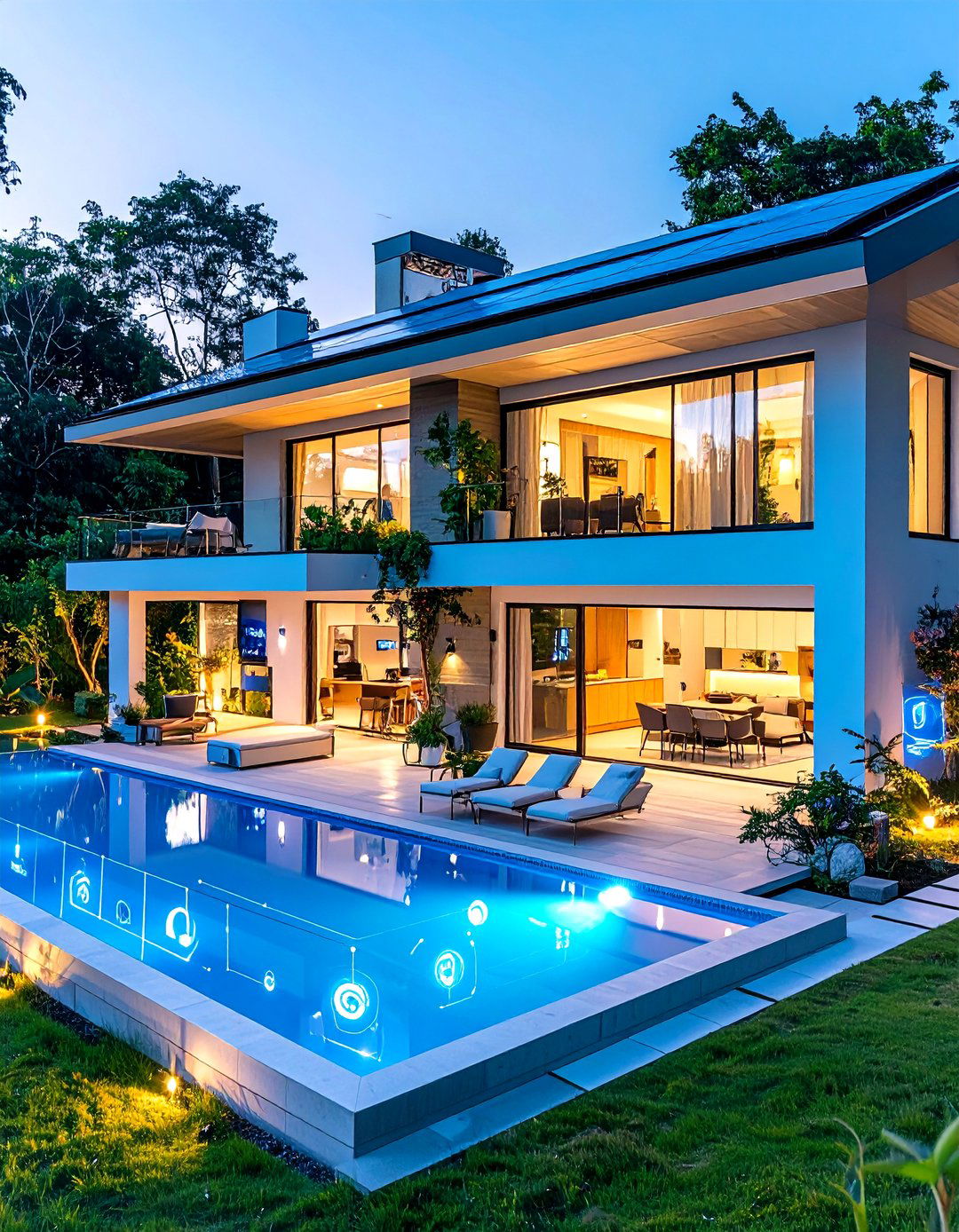
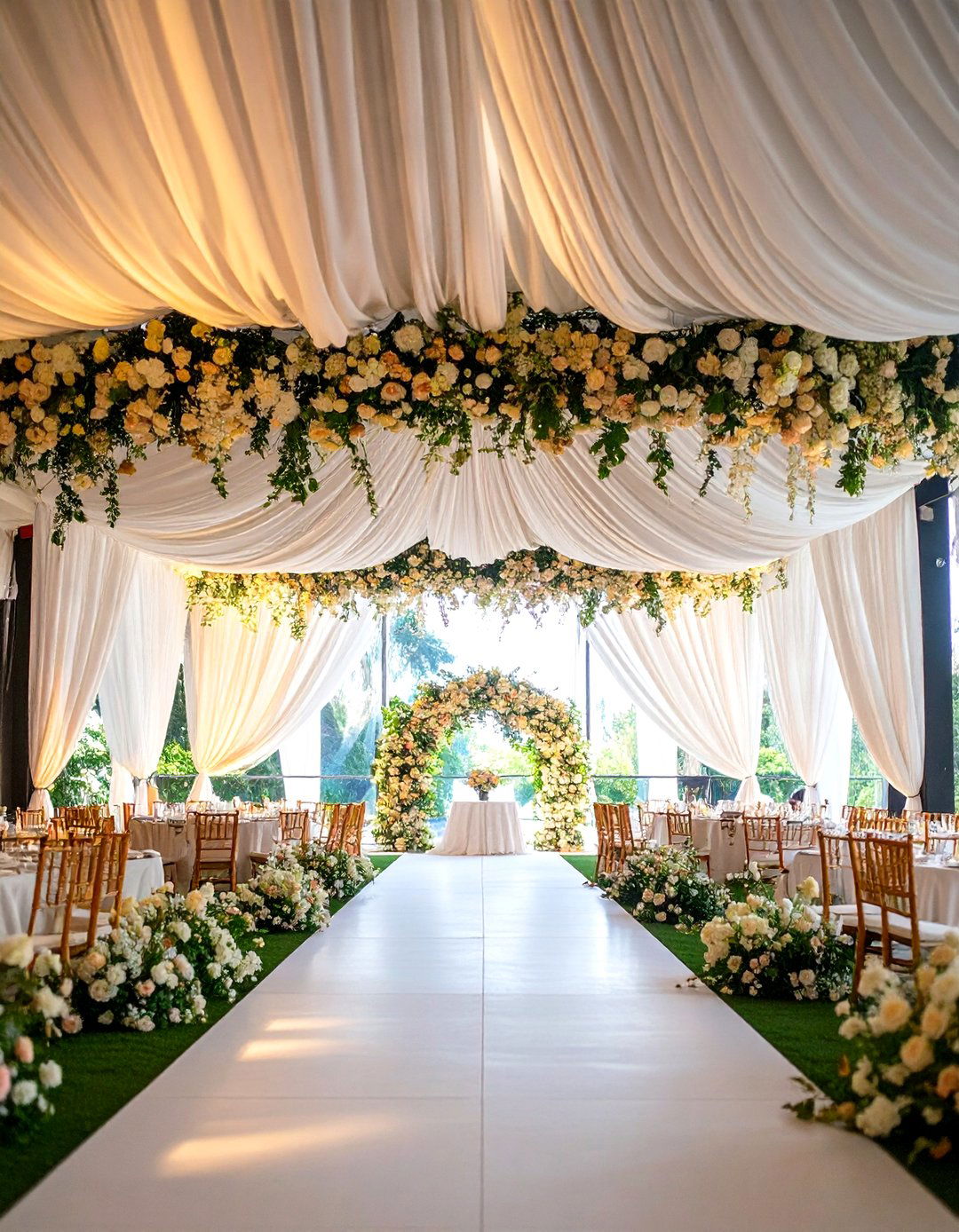
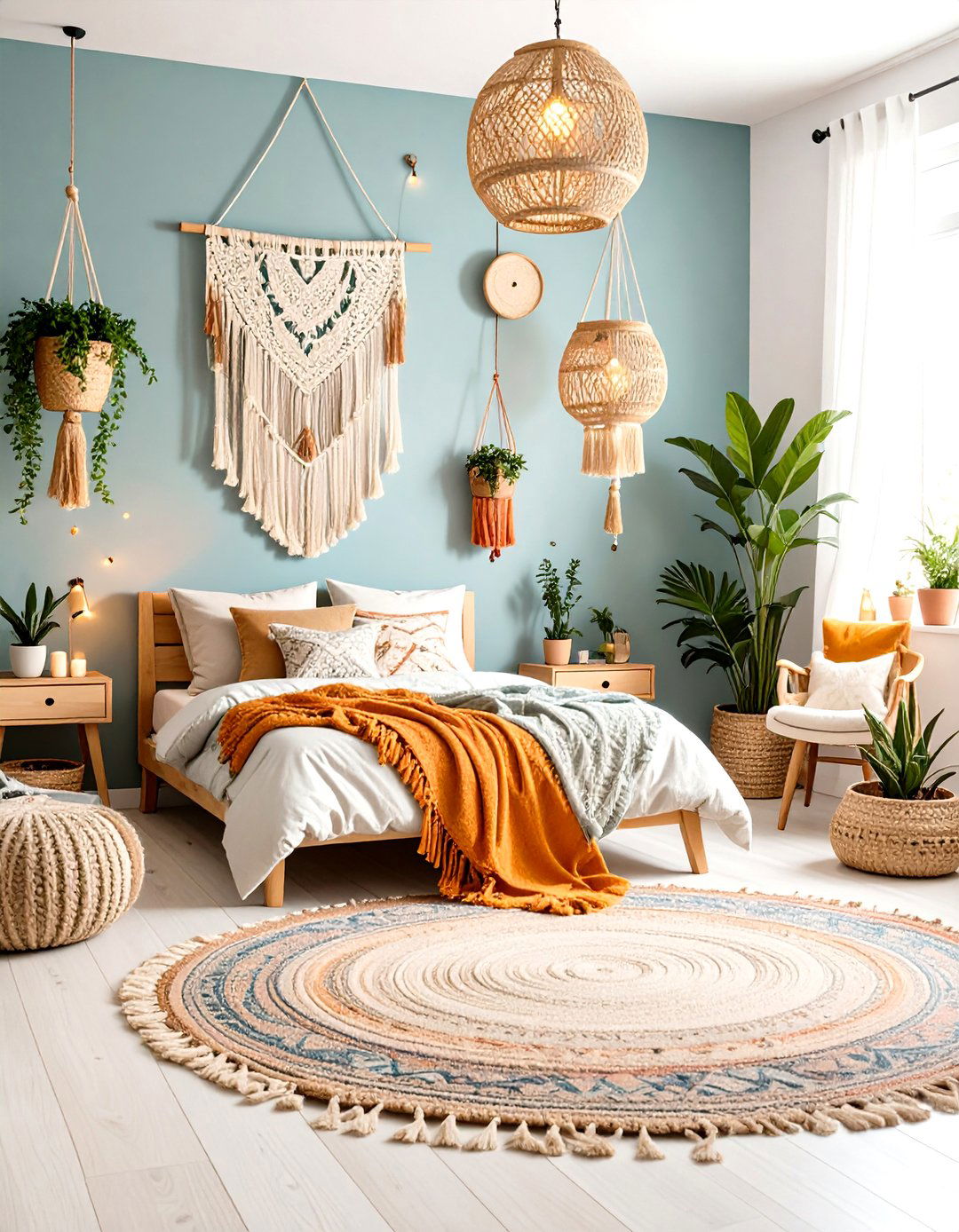
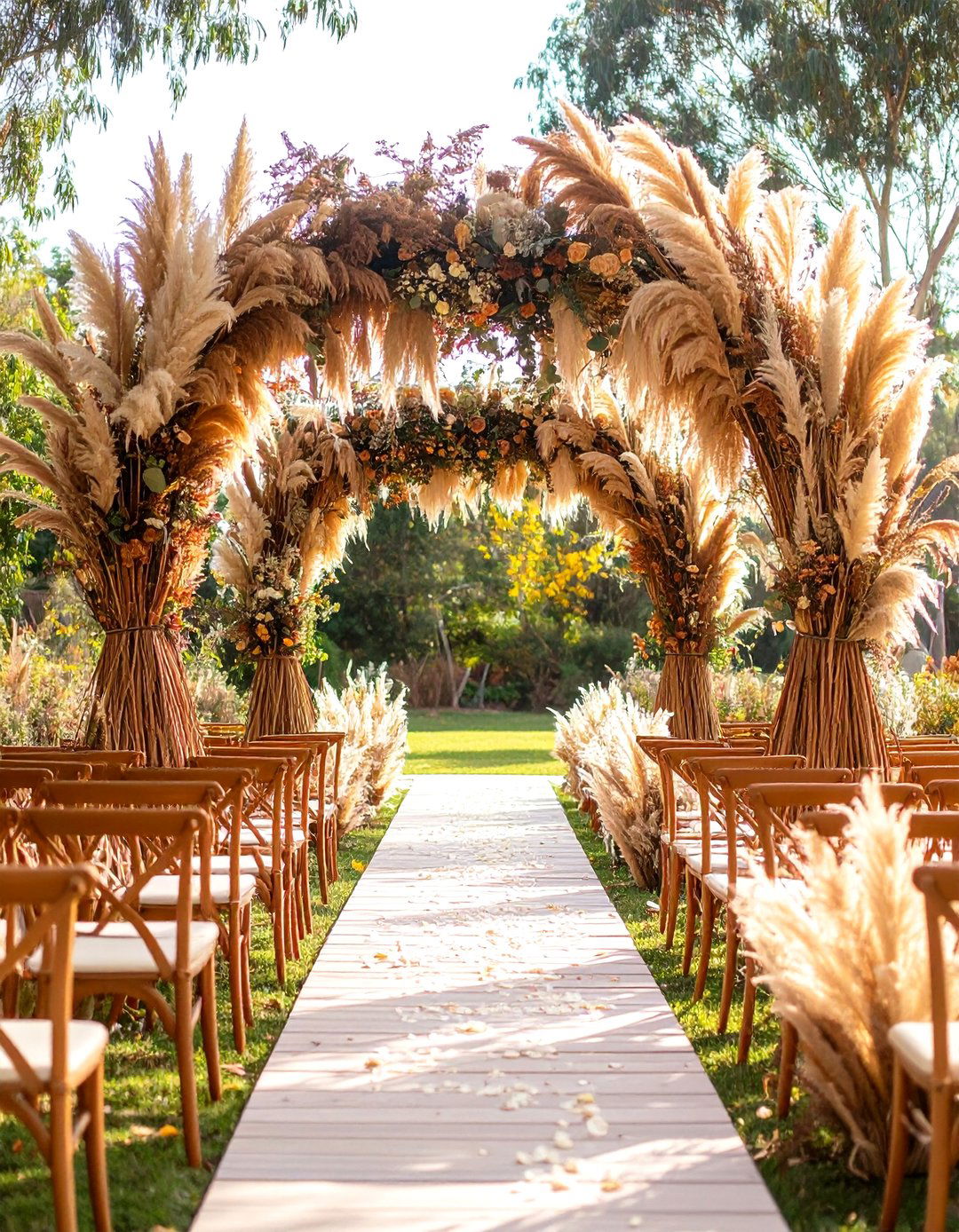
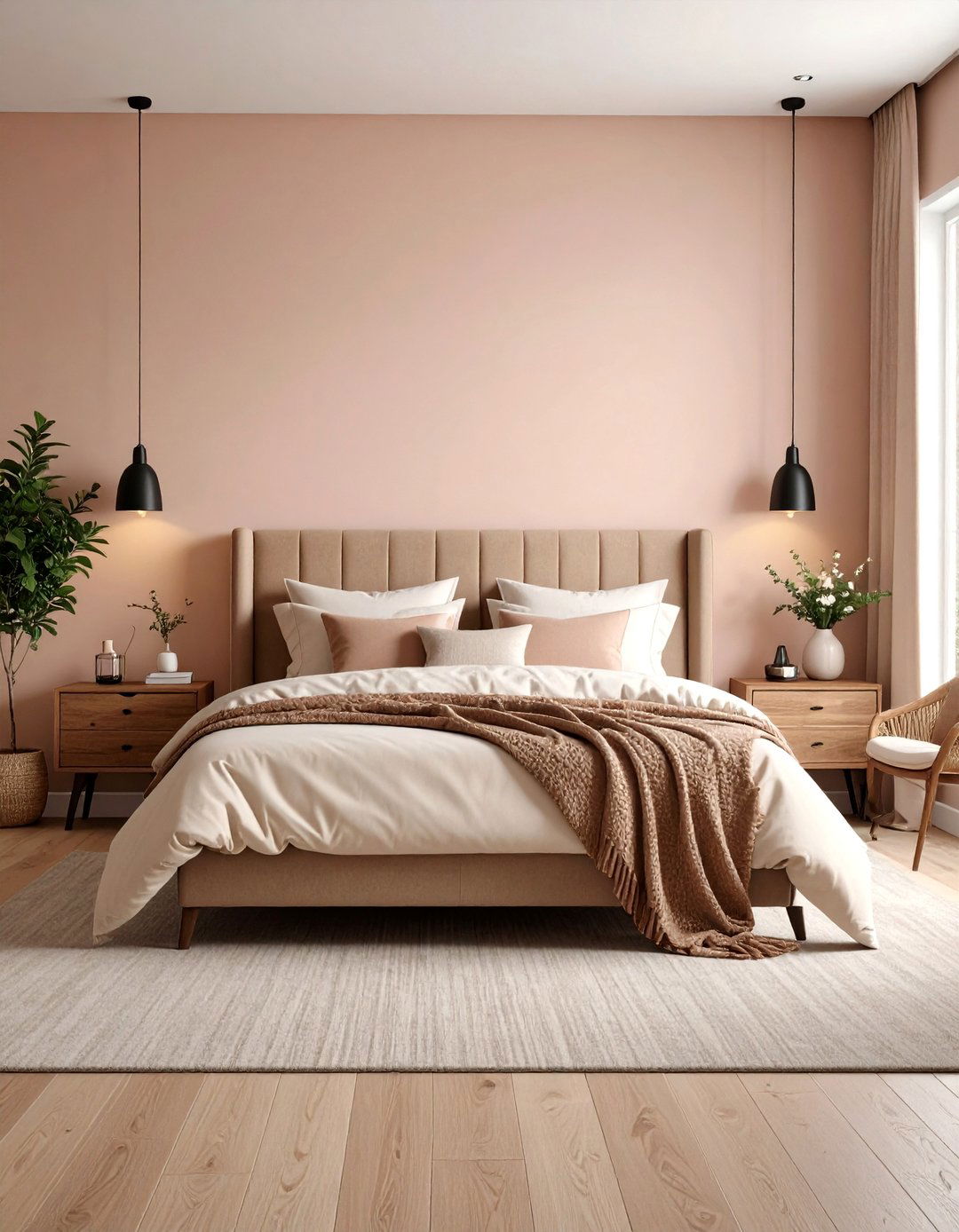
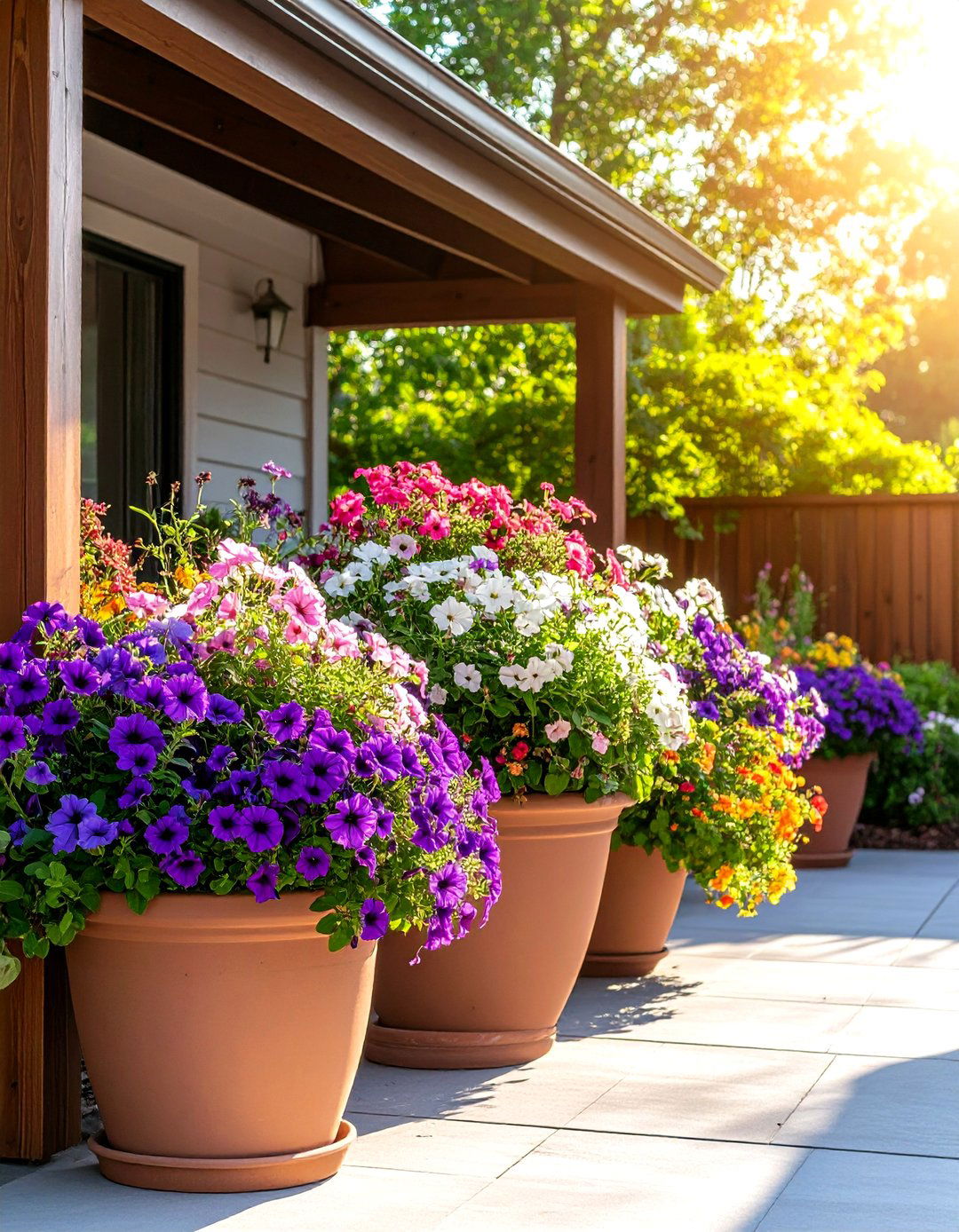
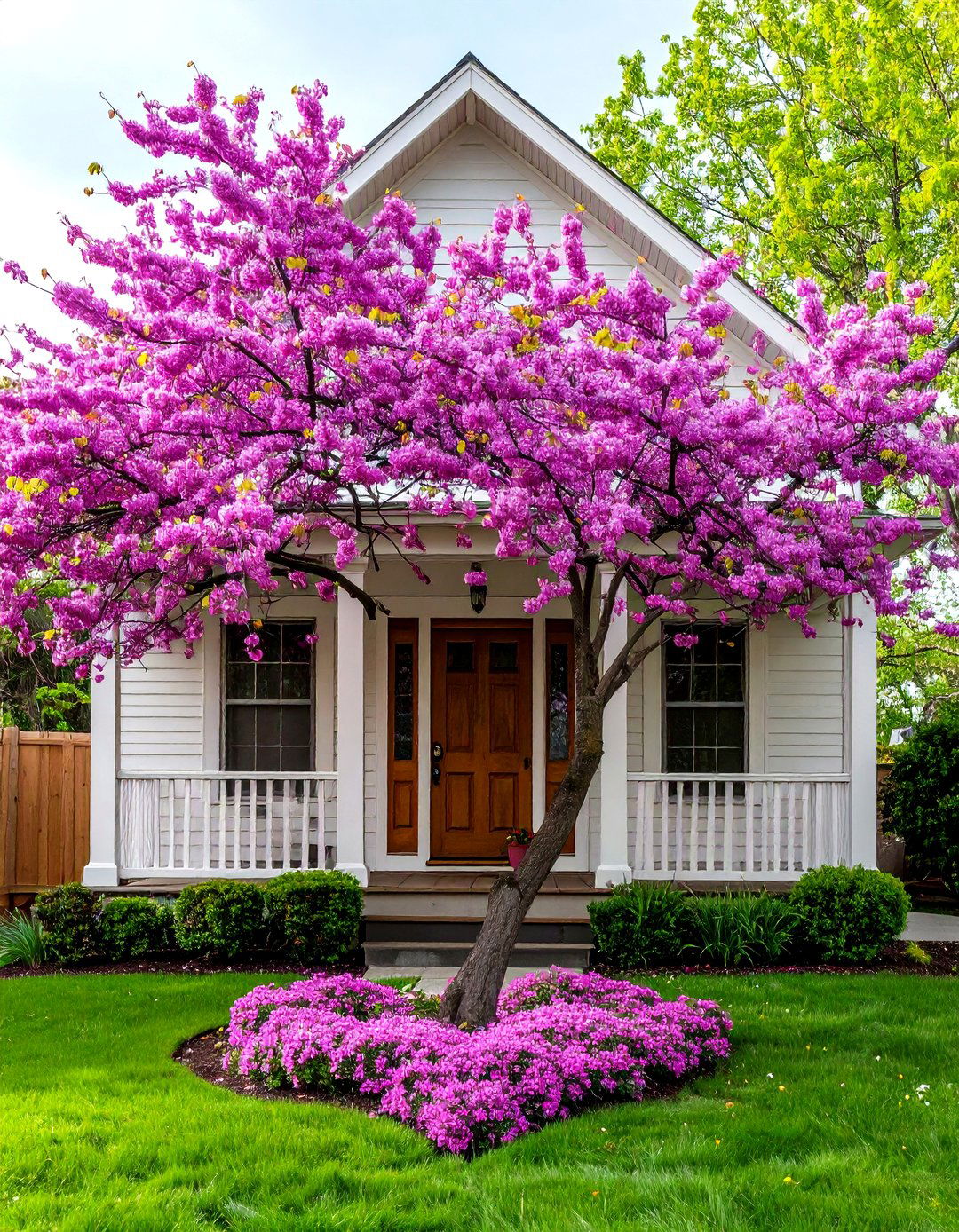
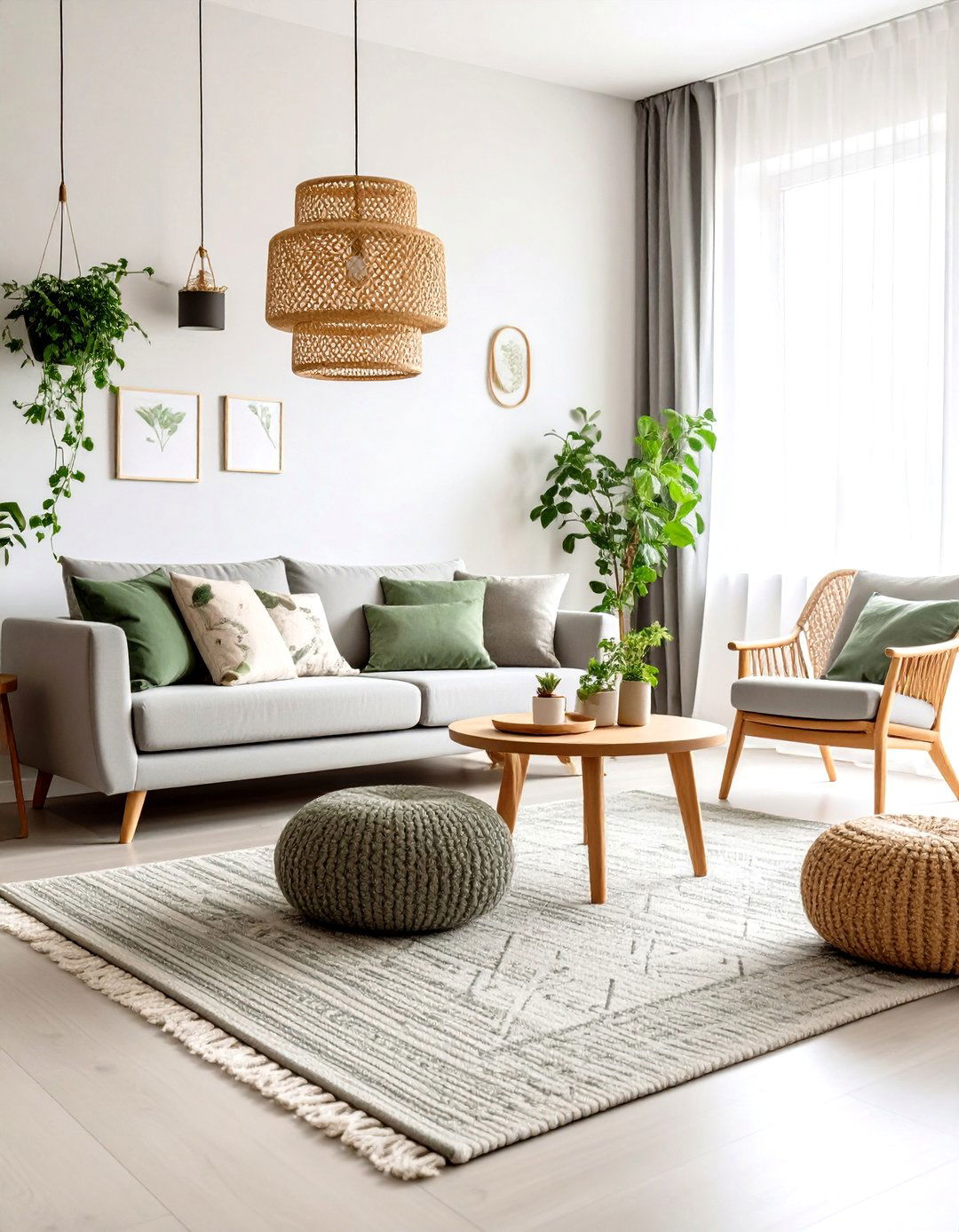
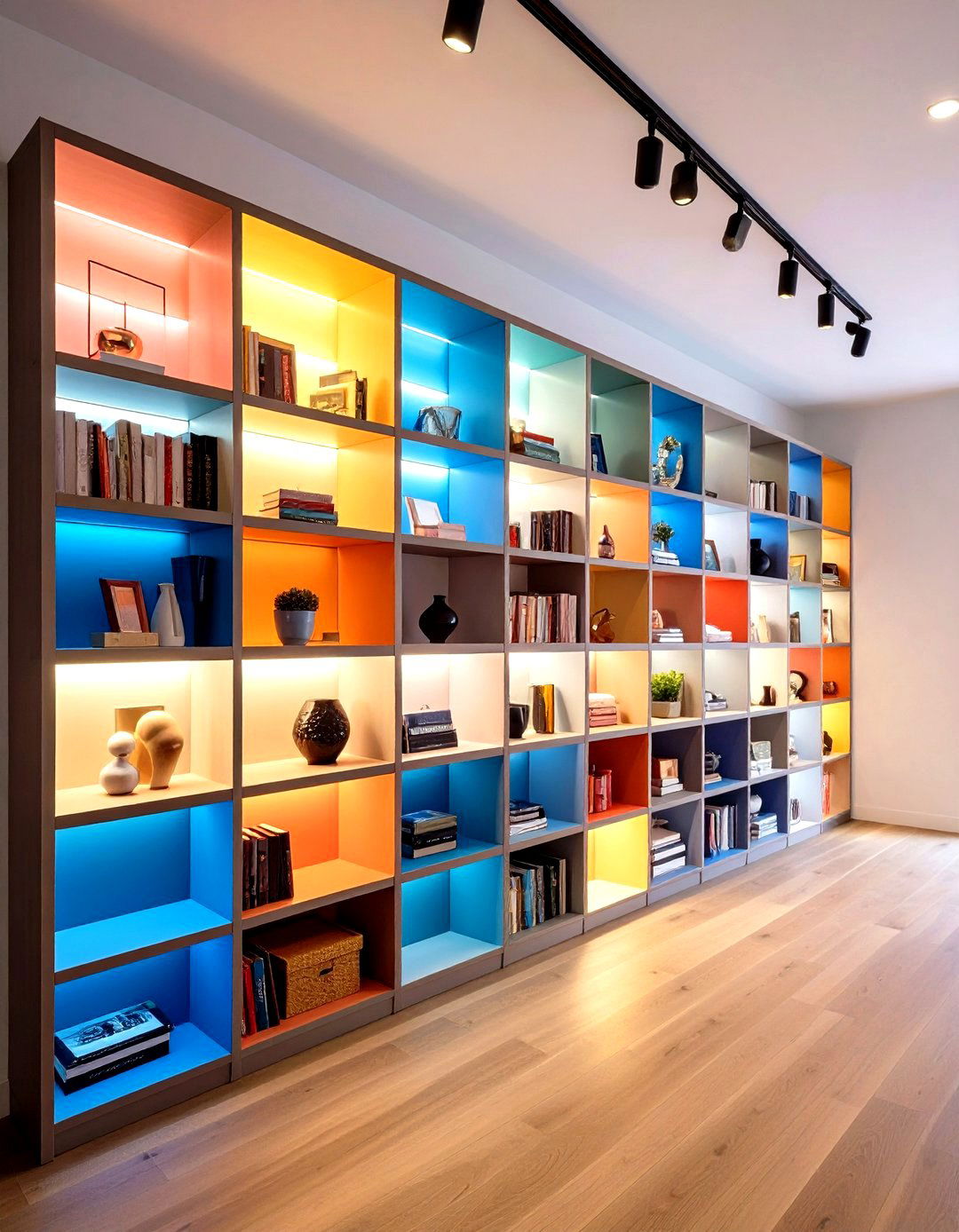
Leave a Reply